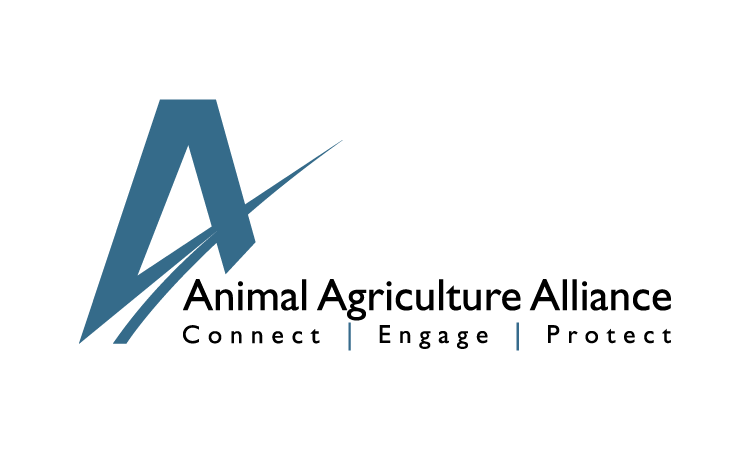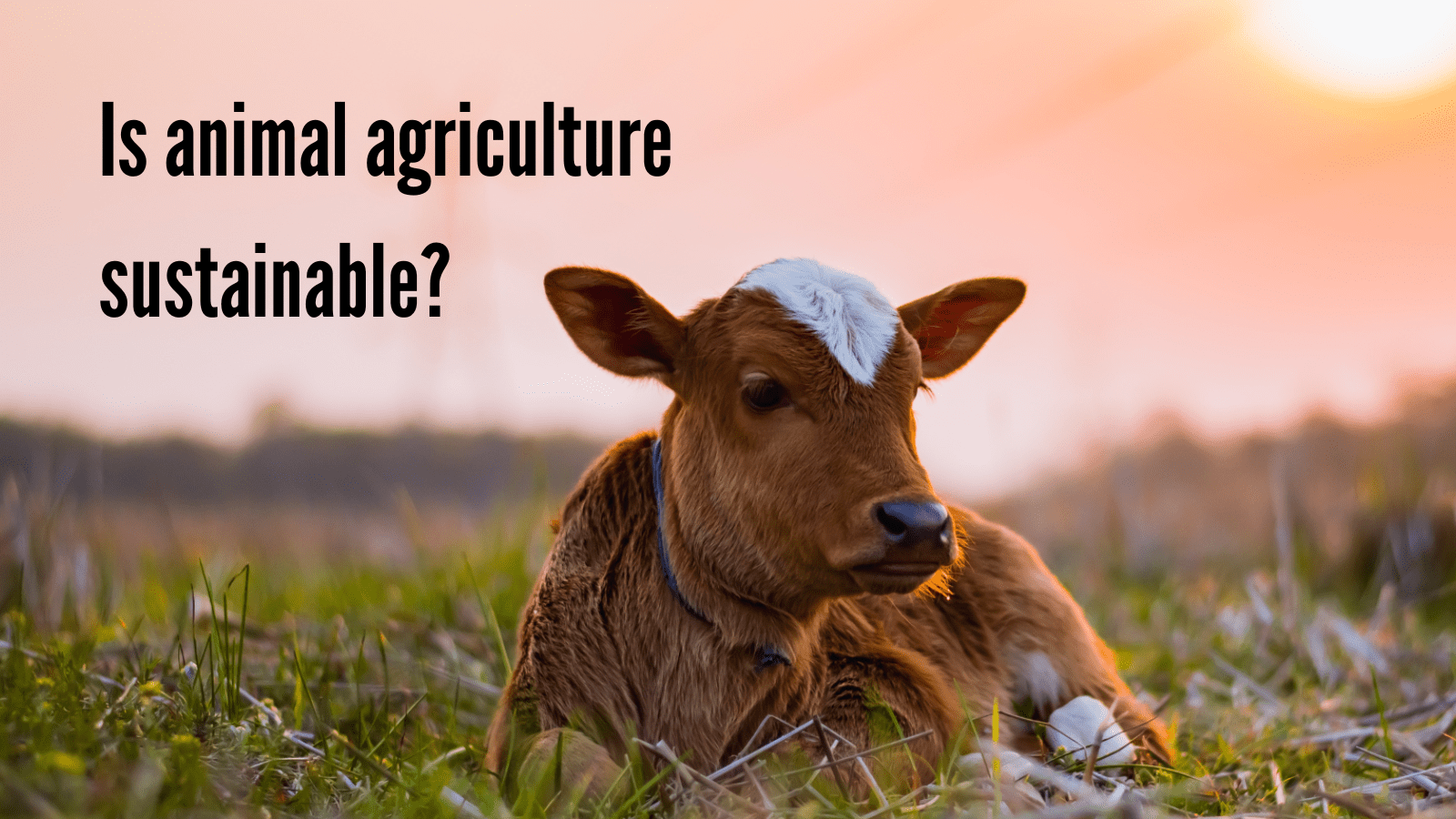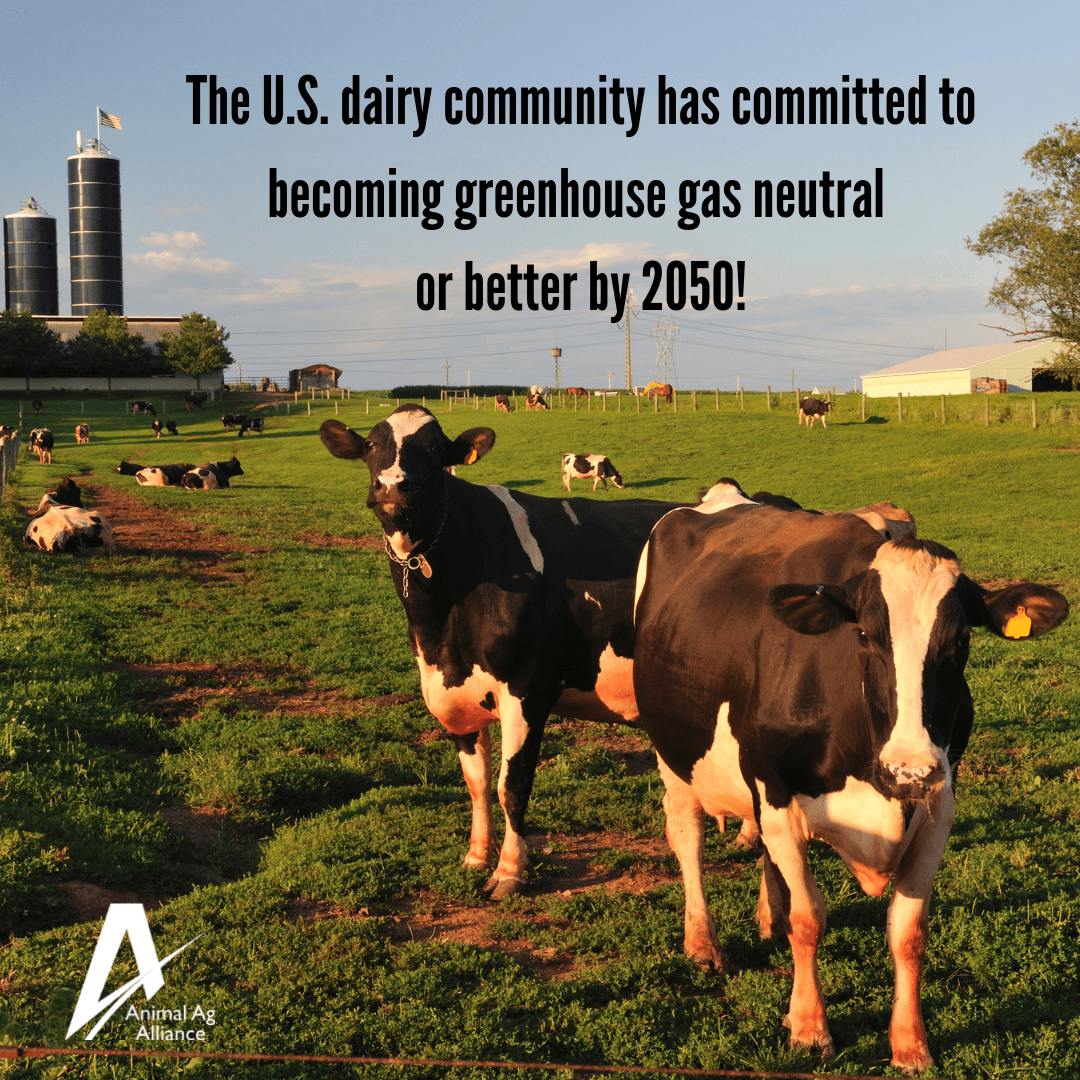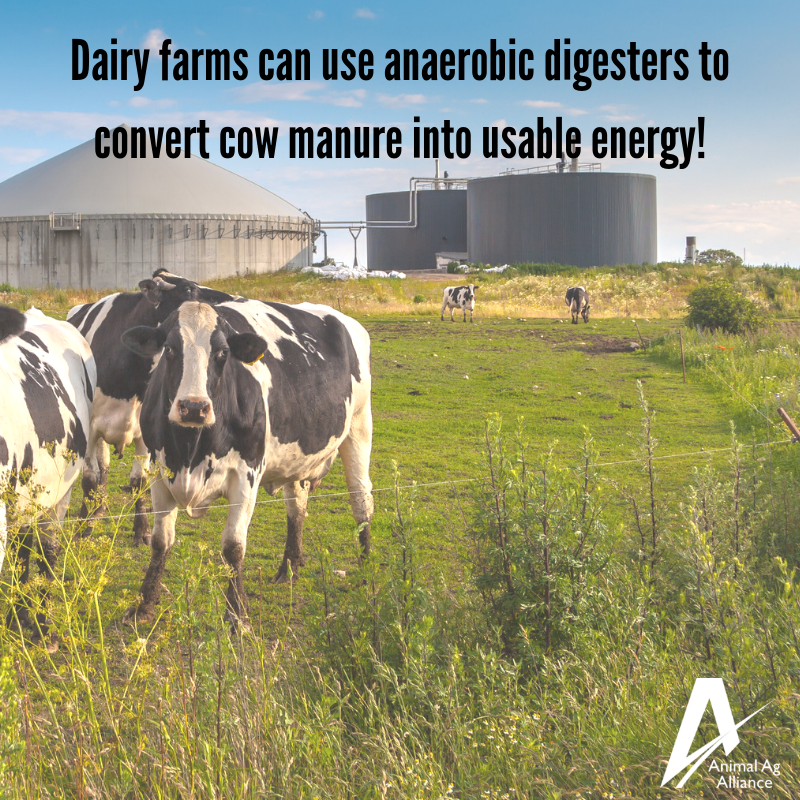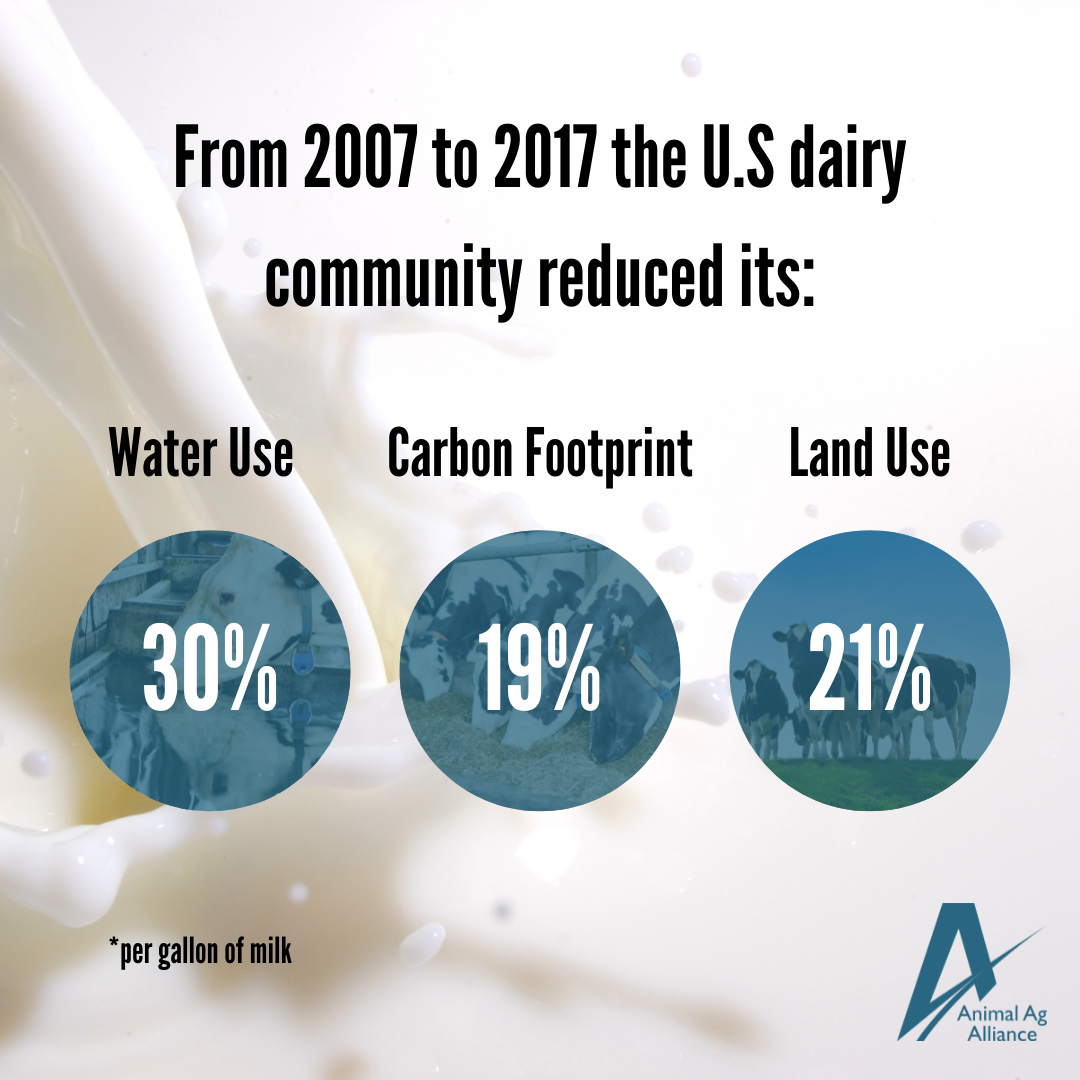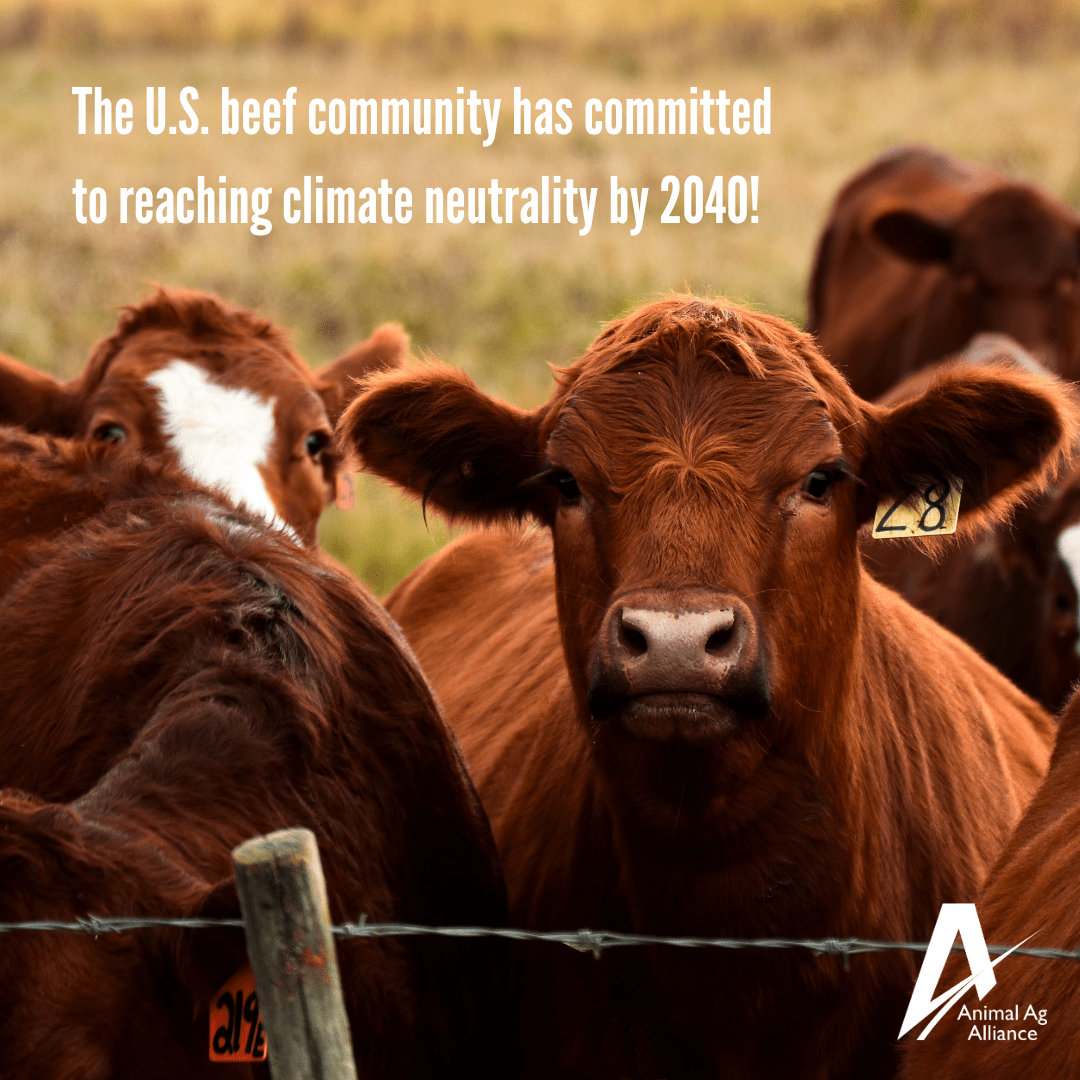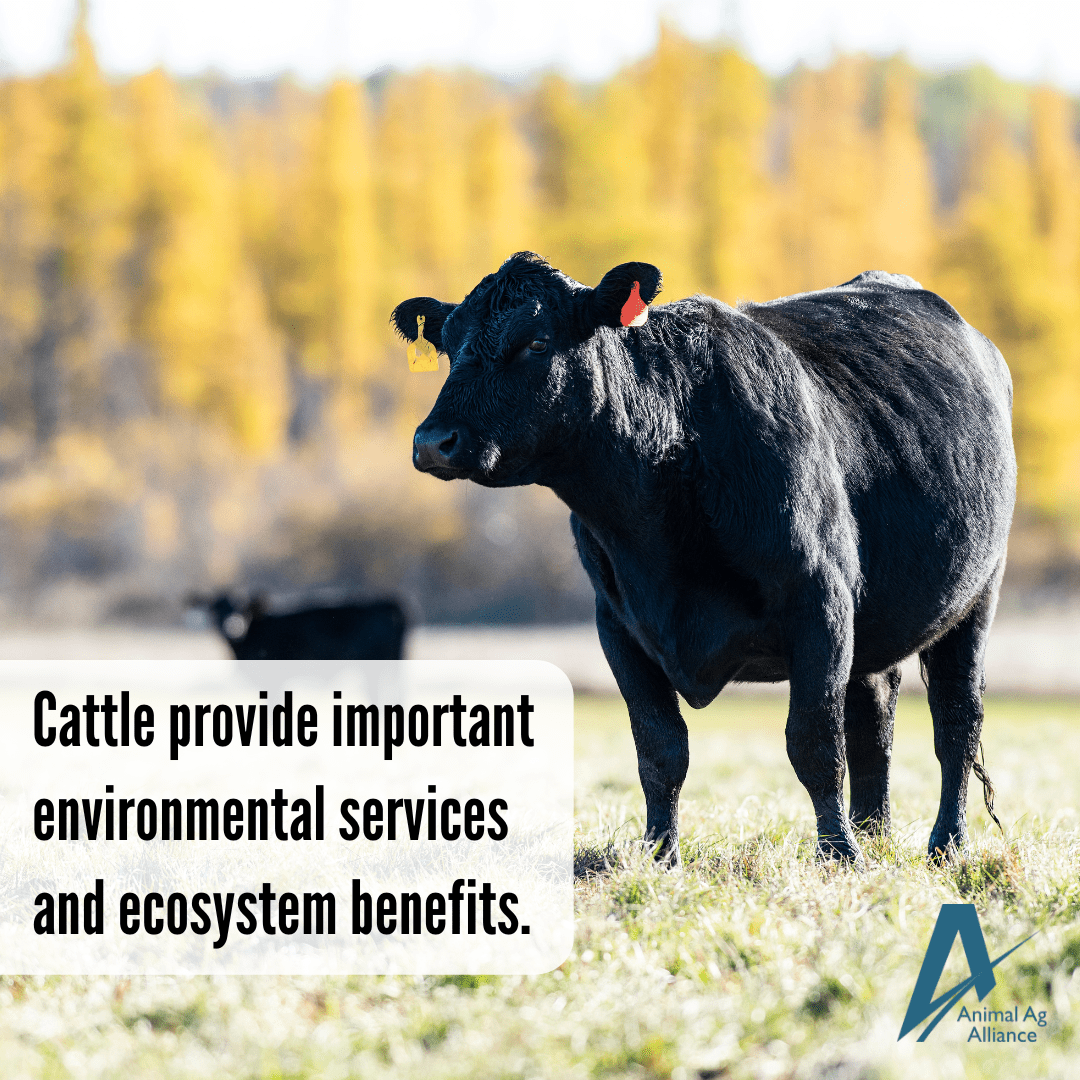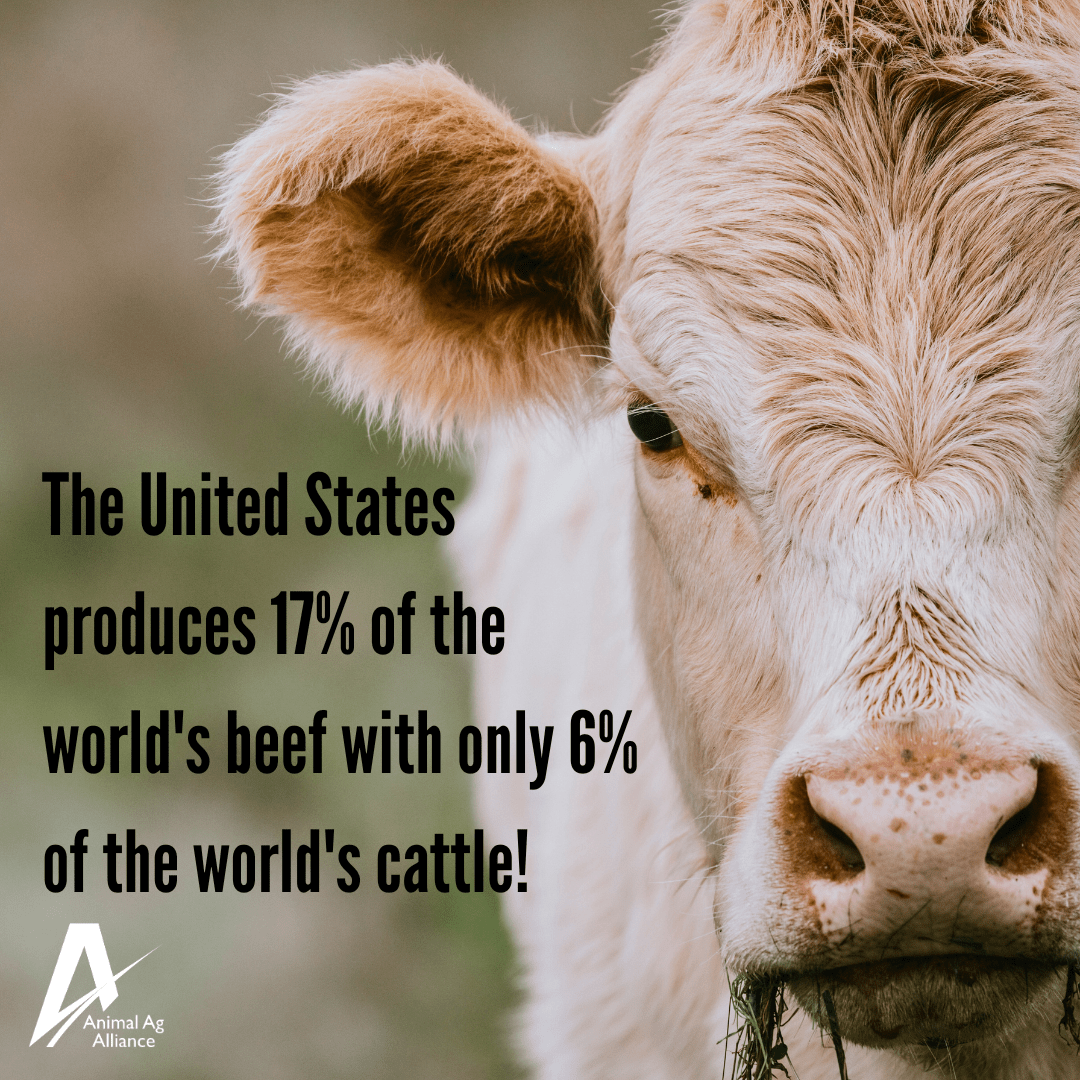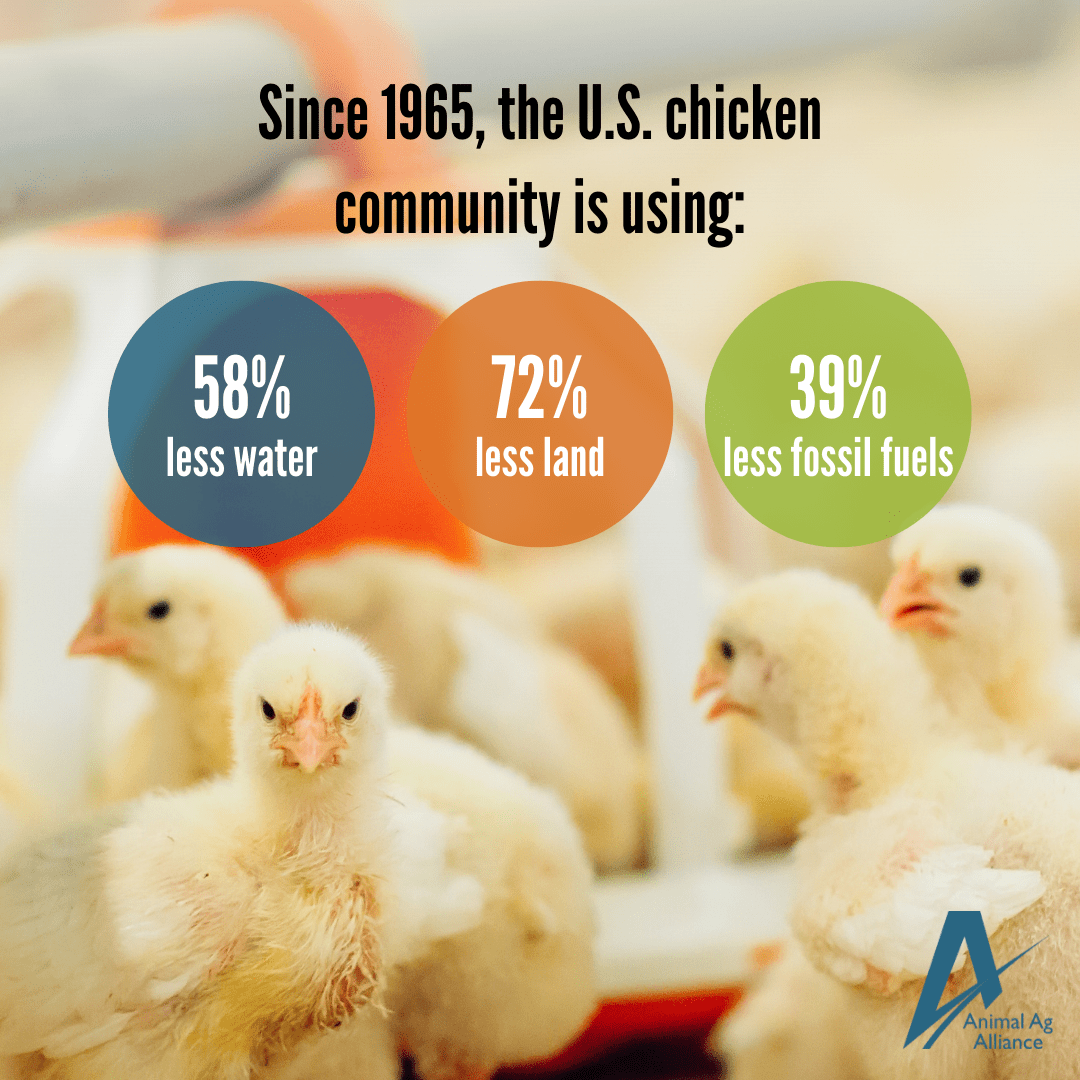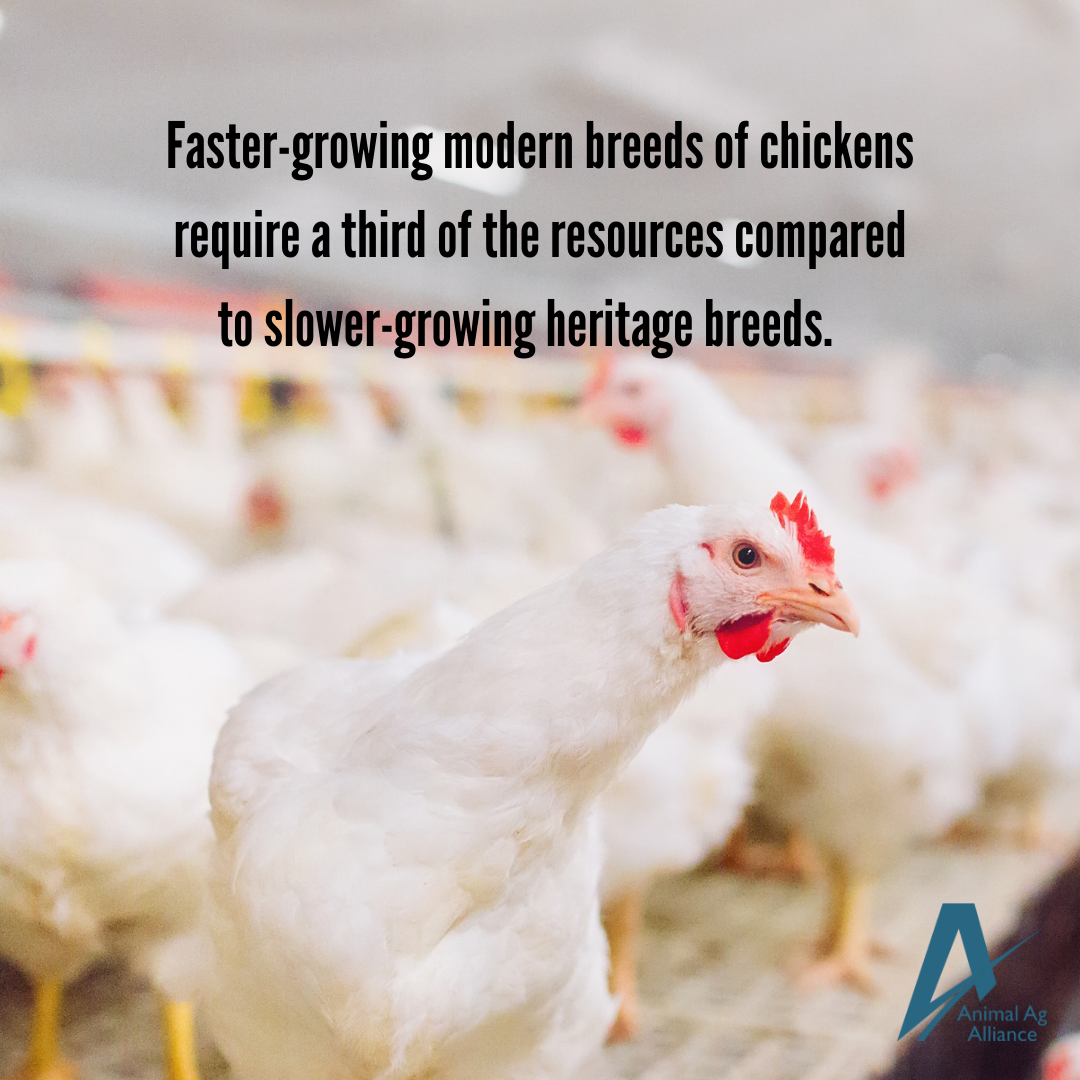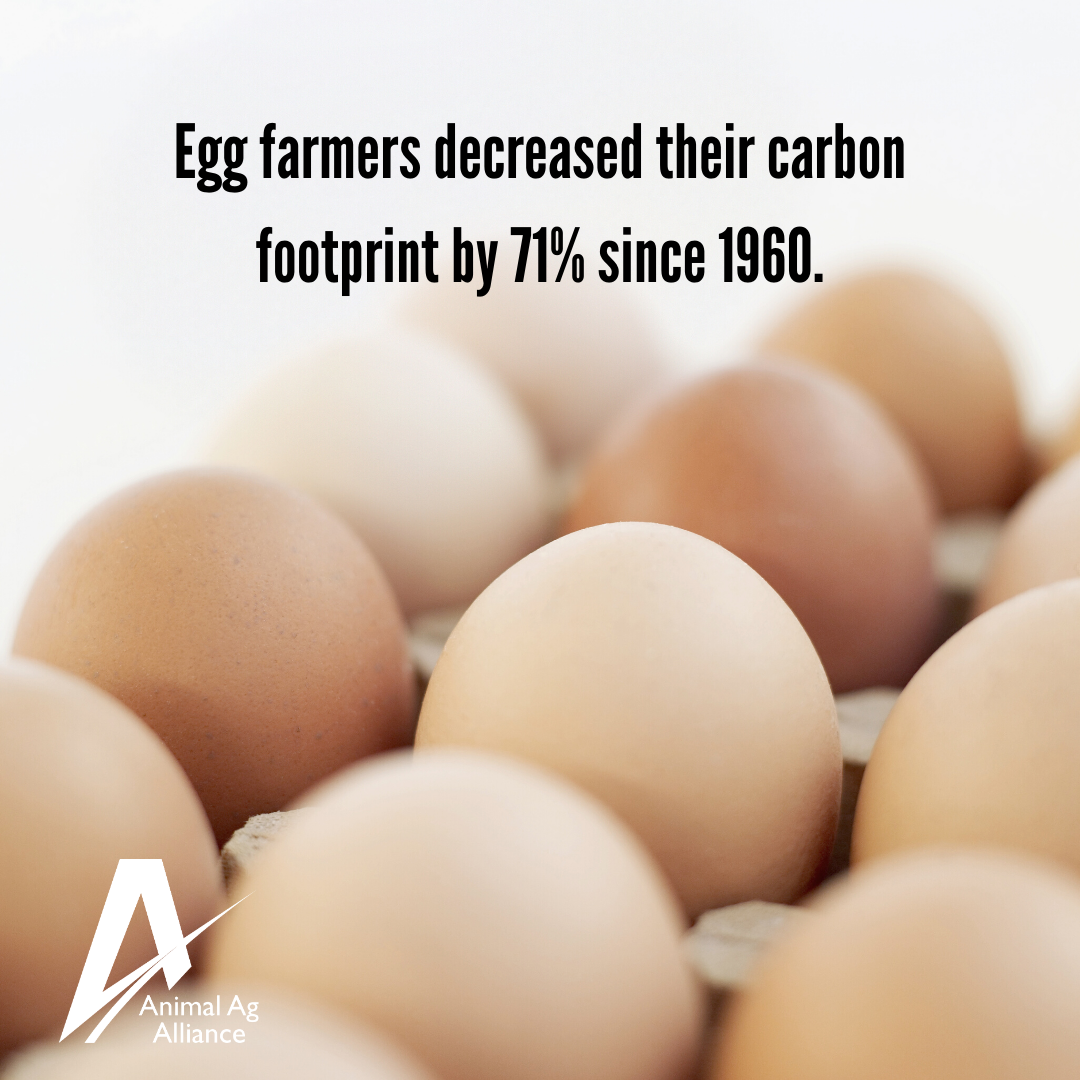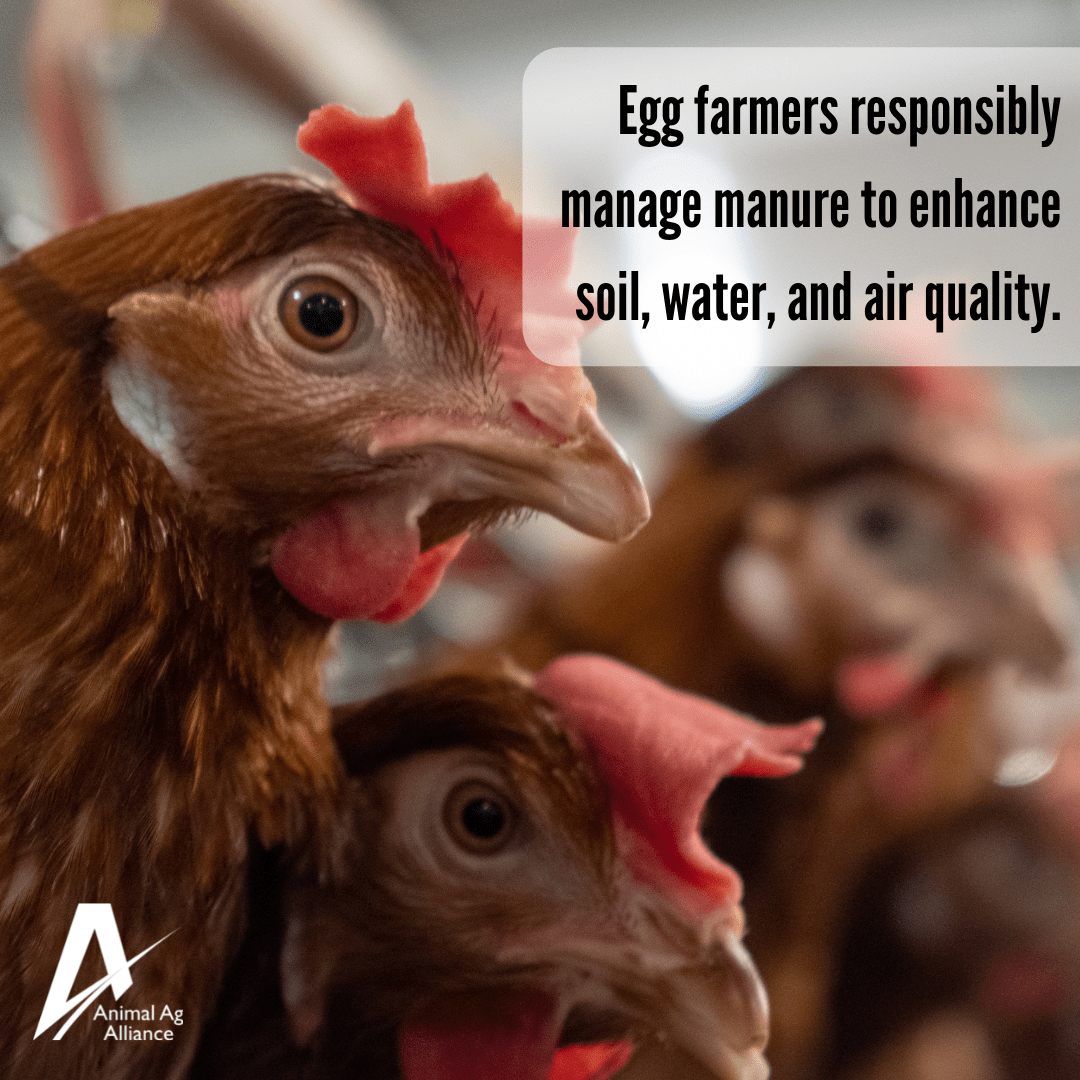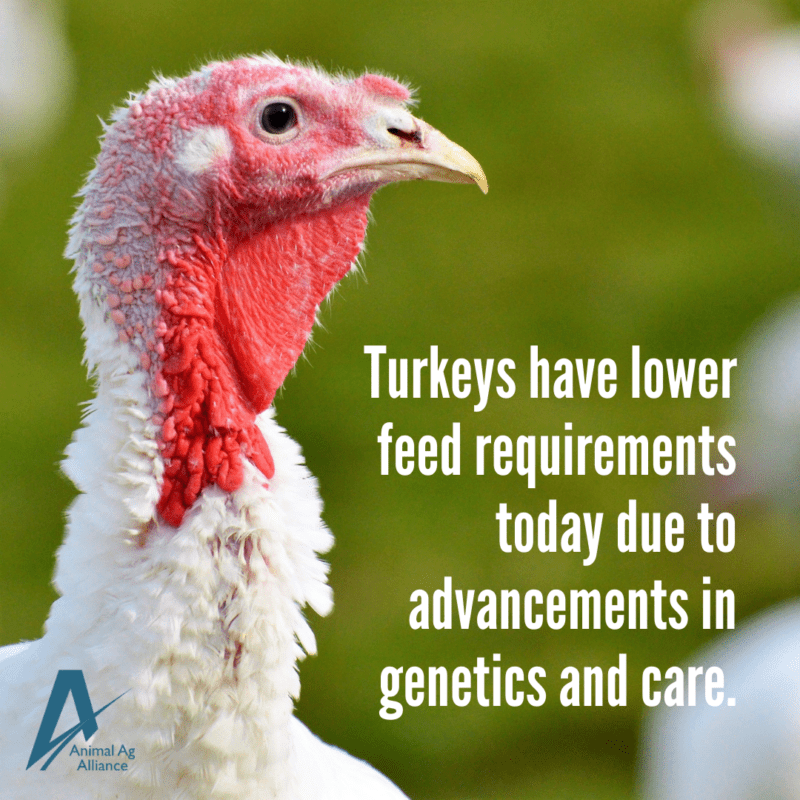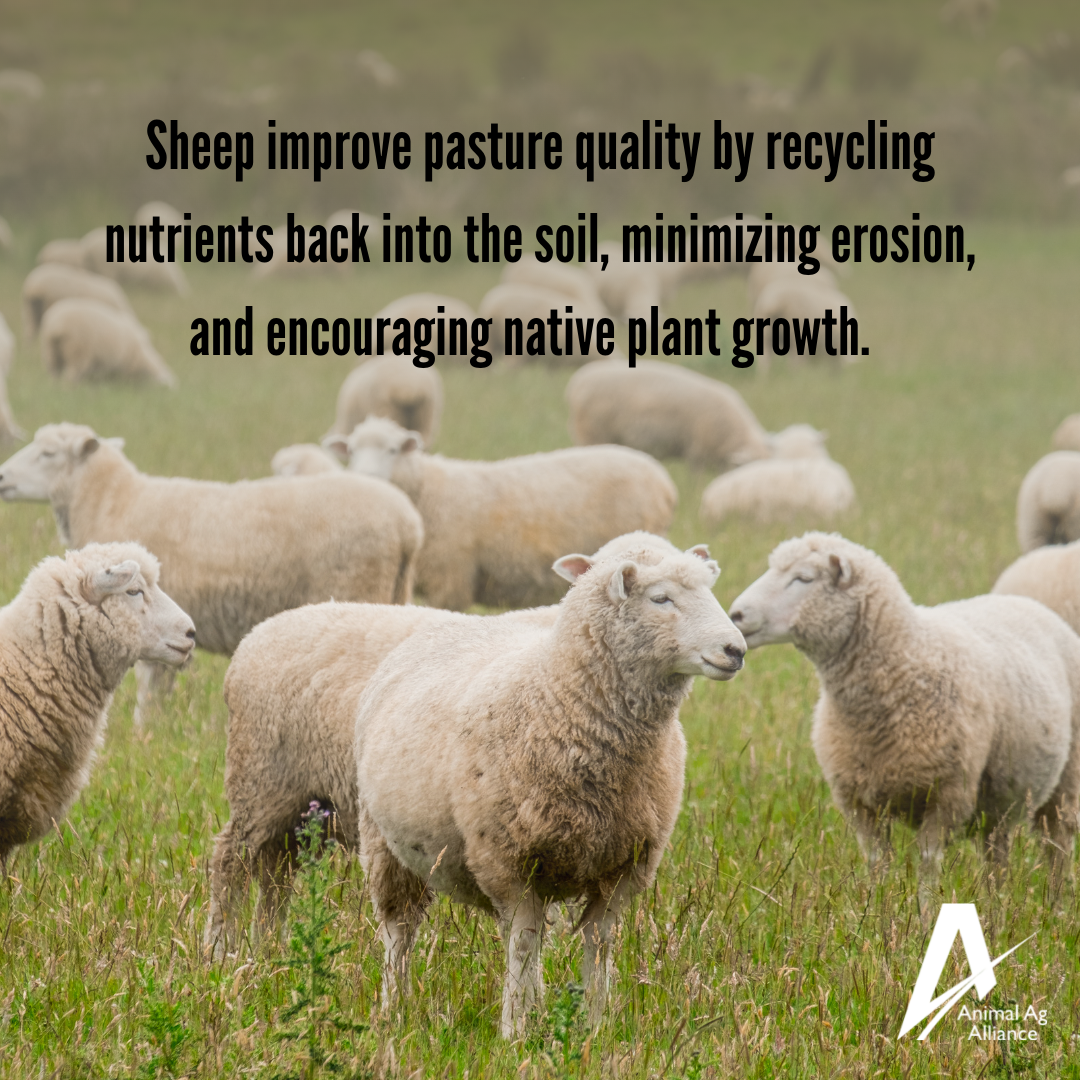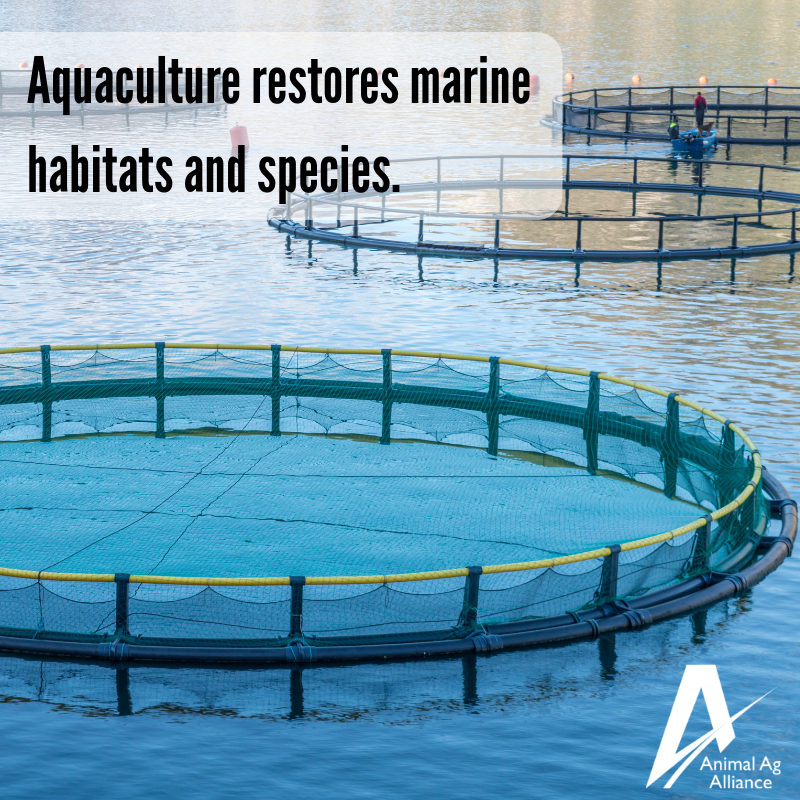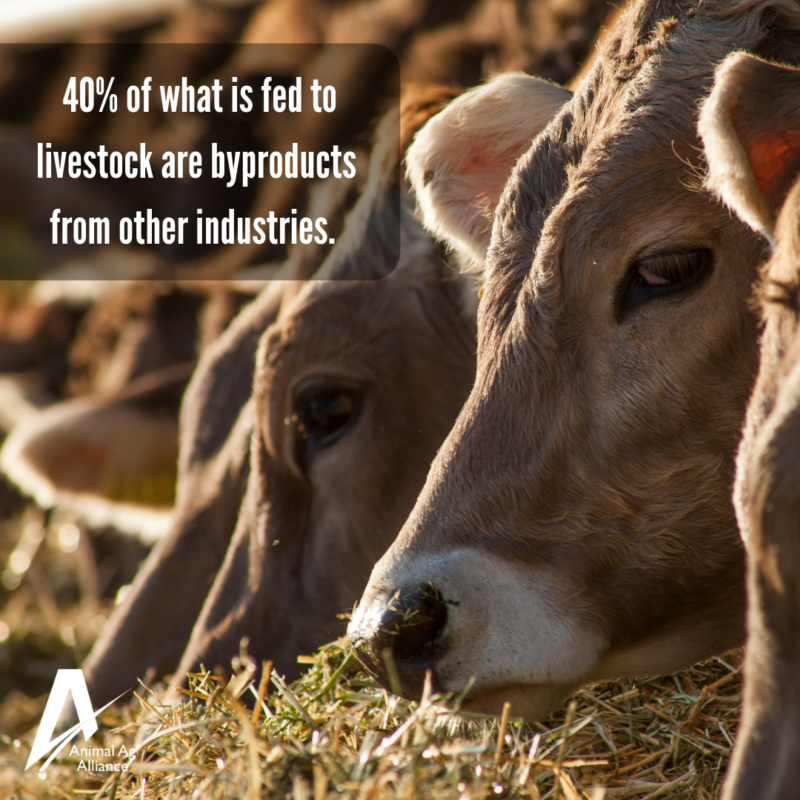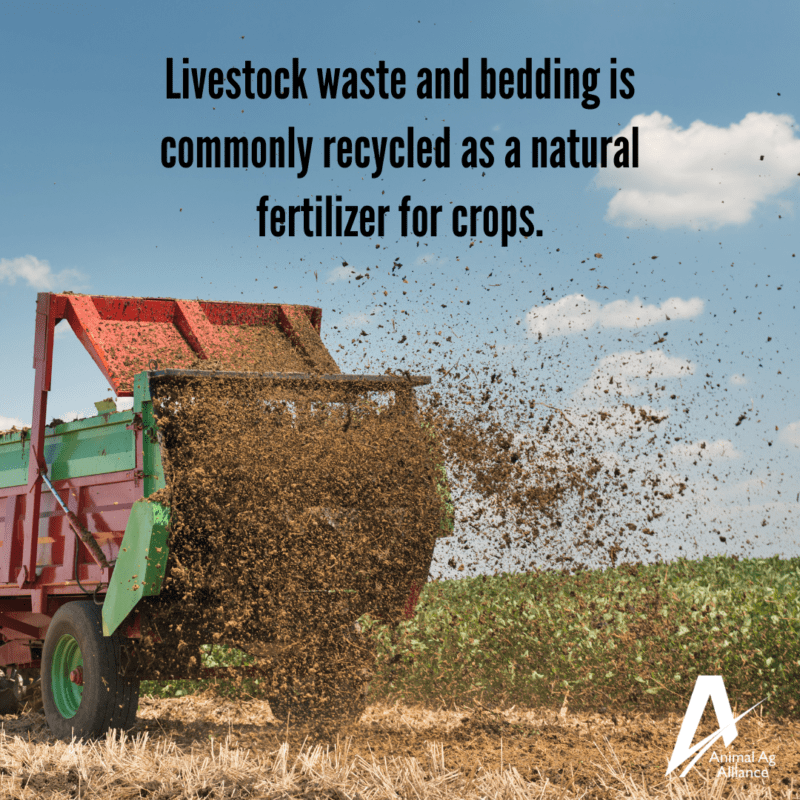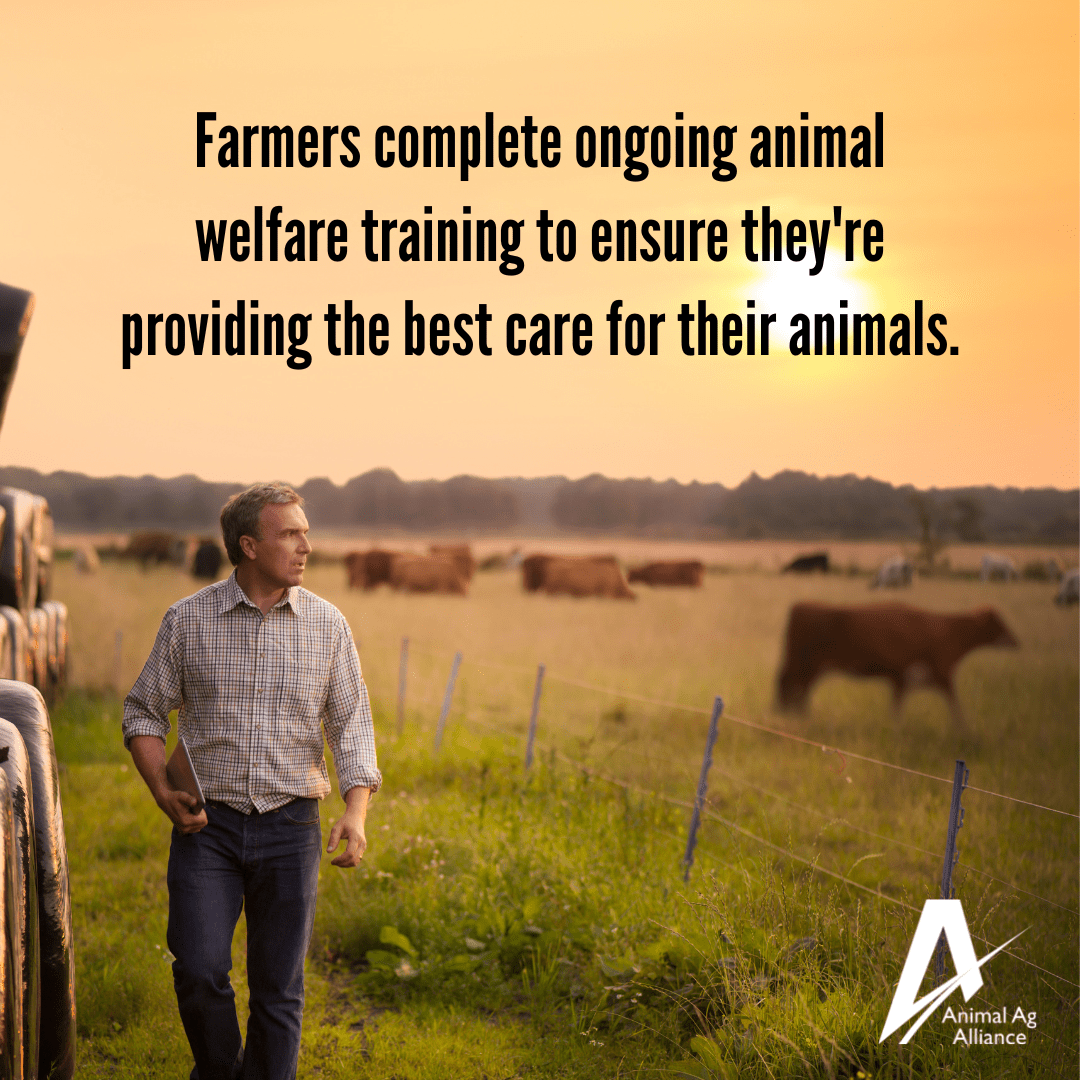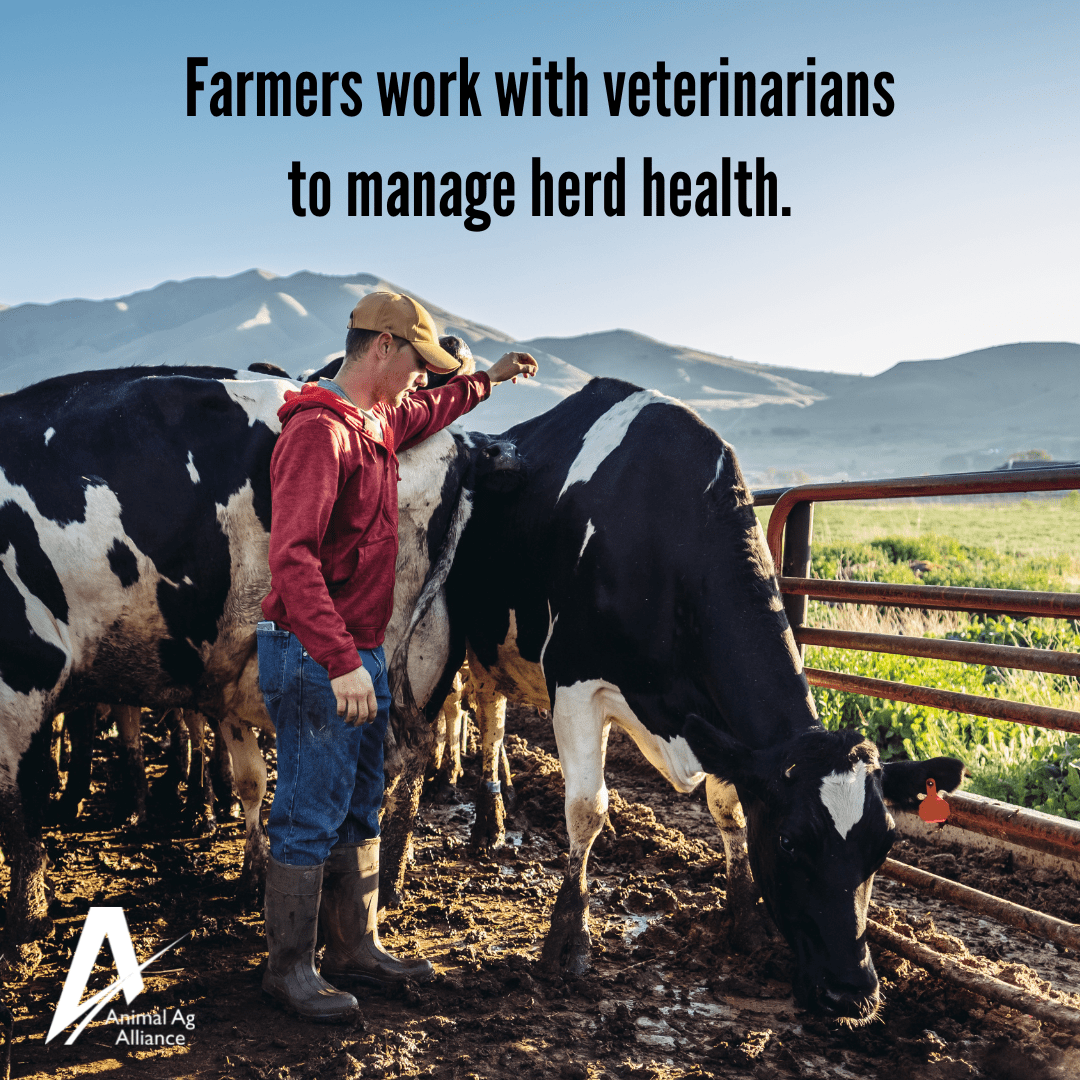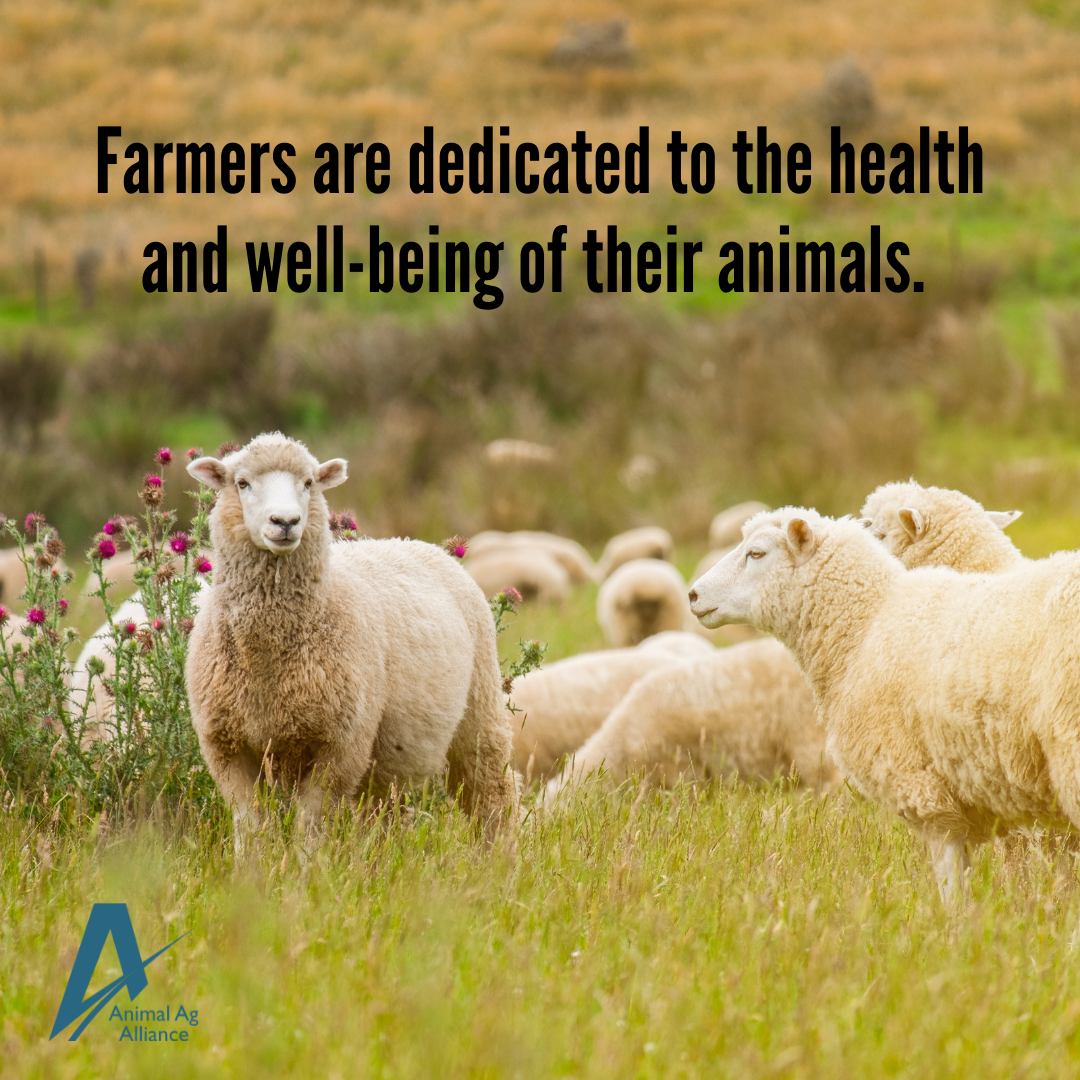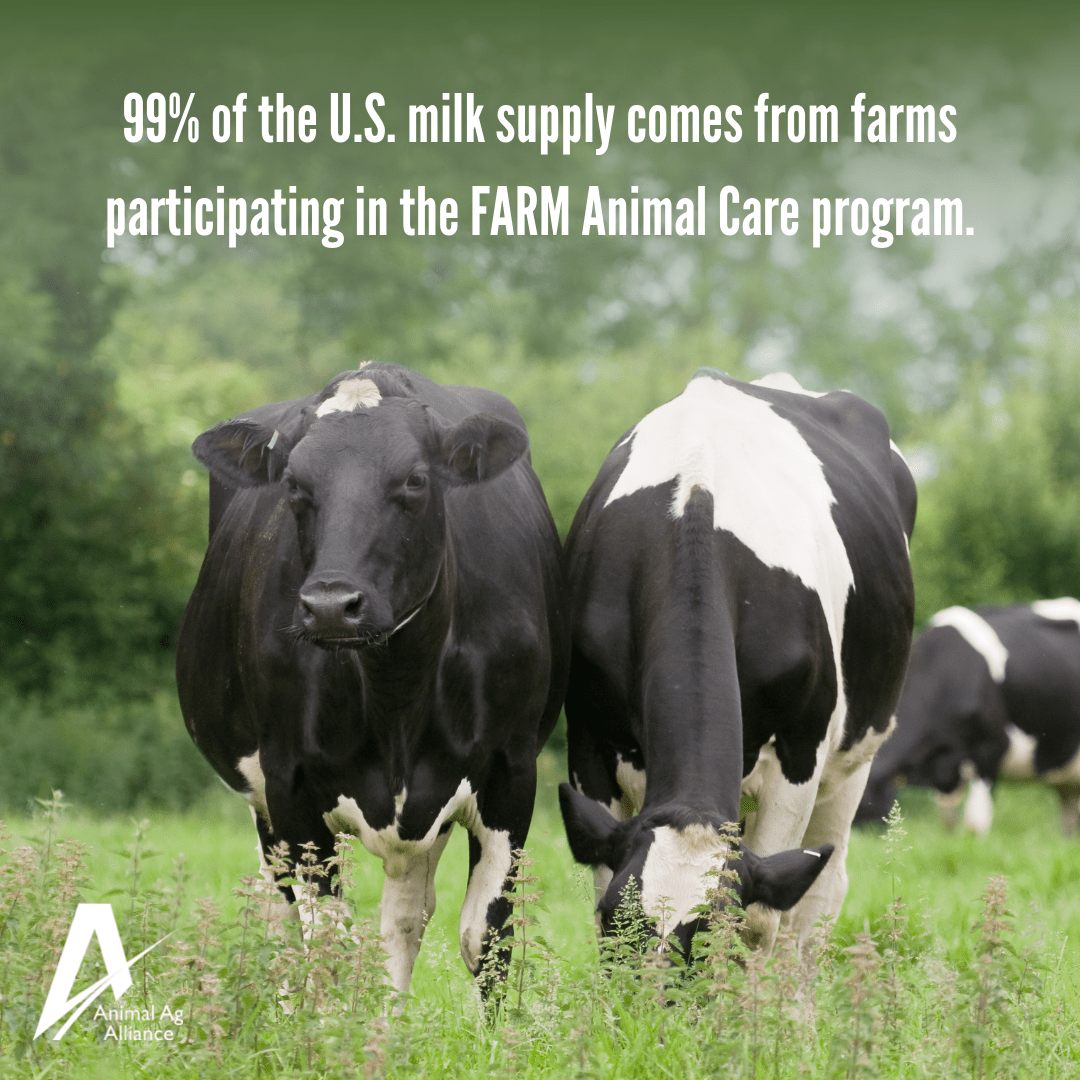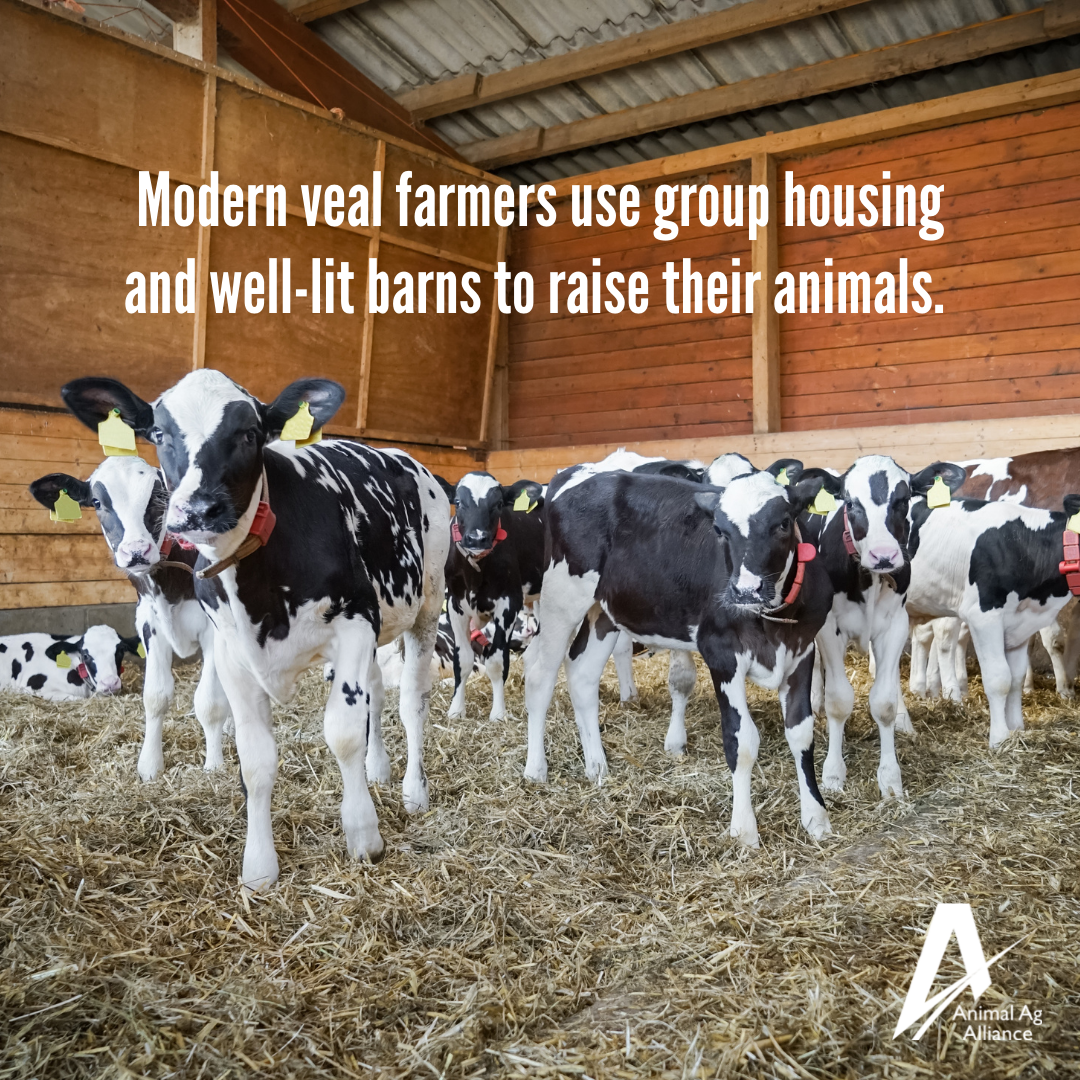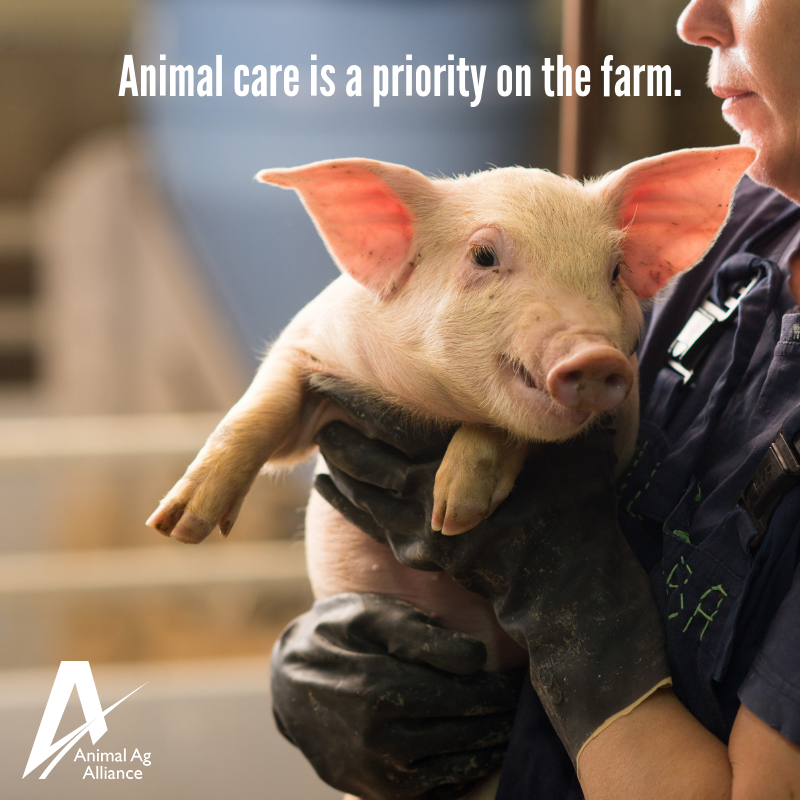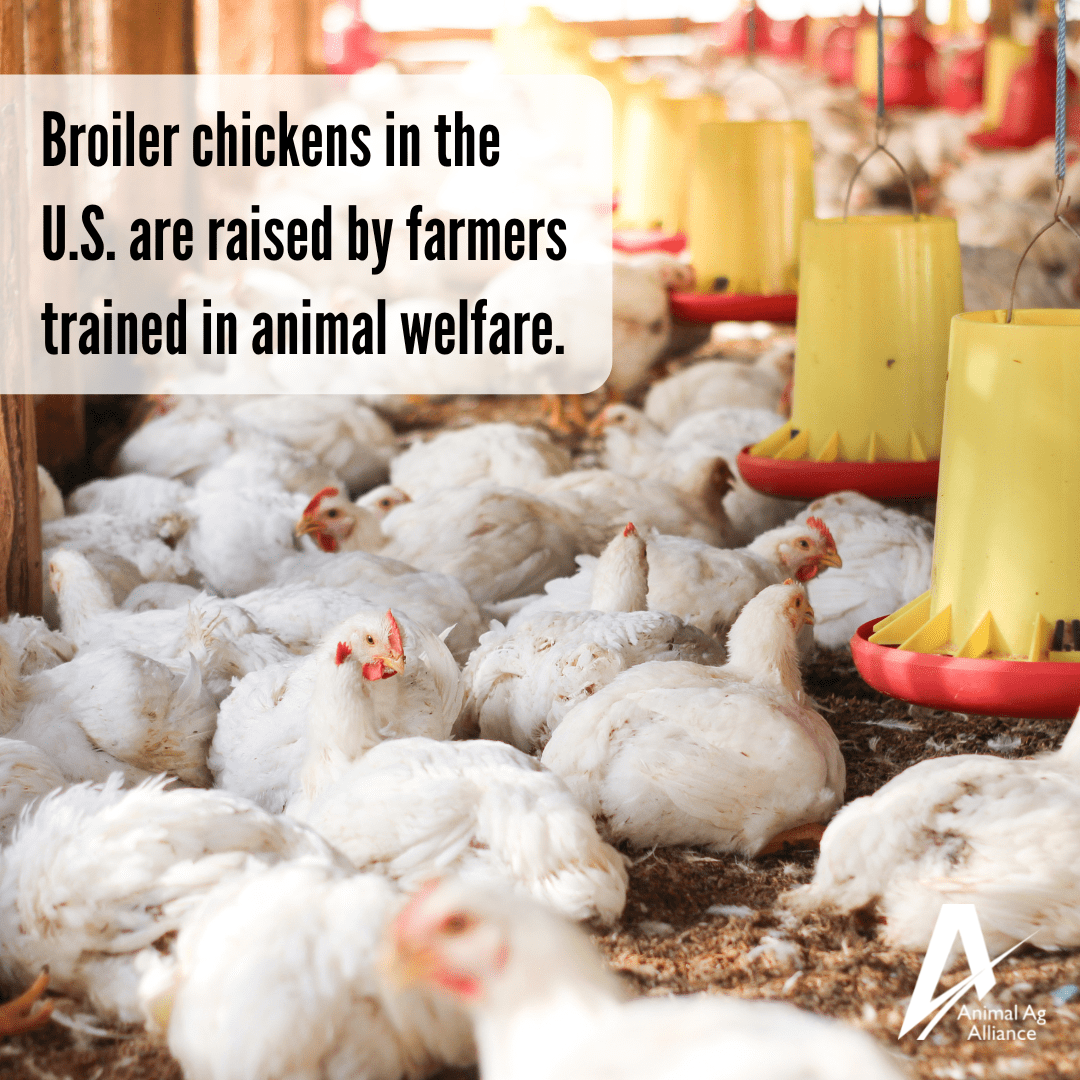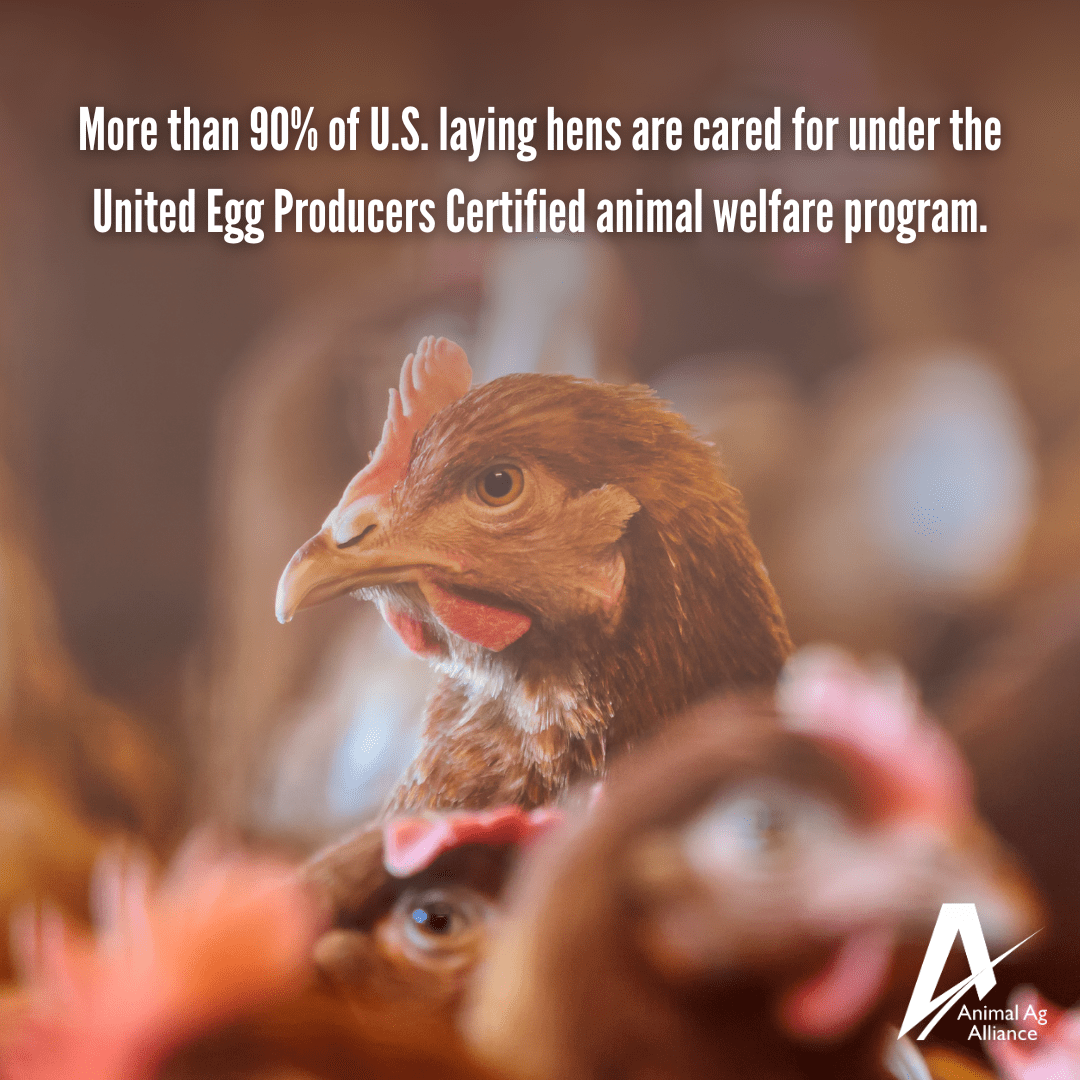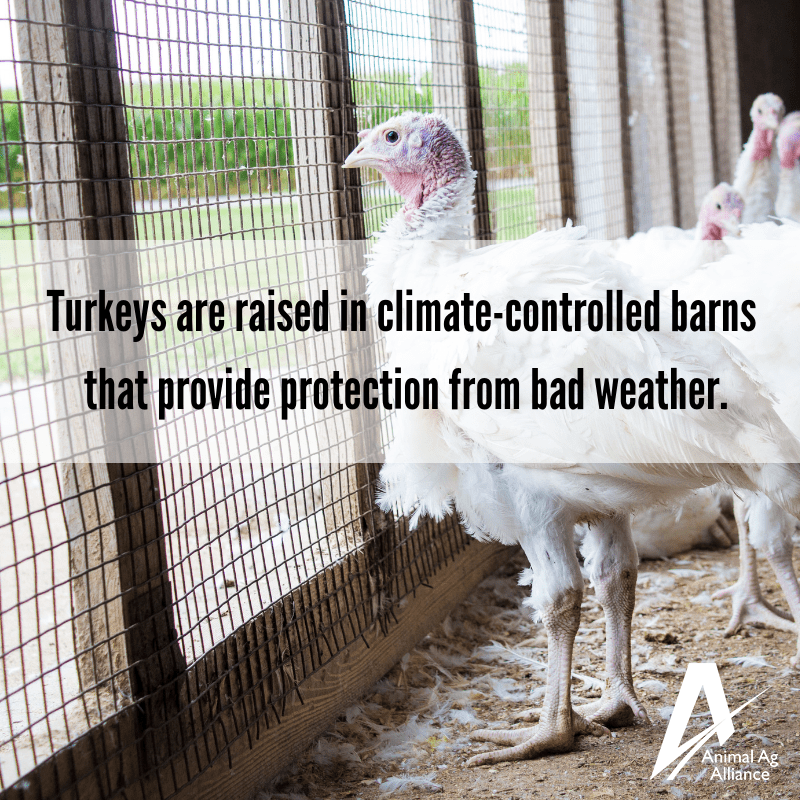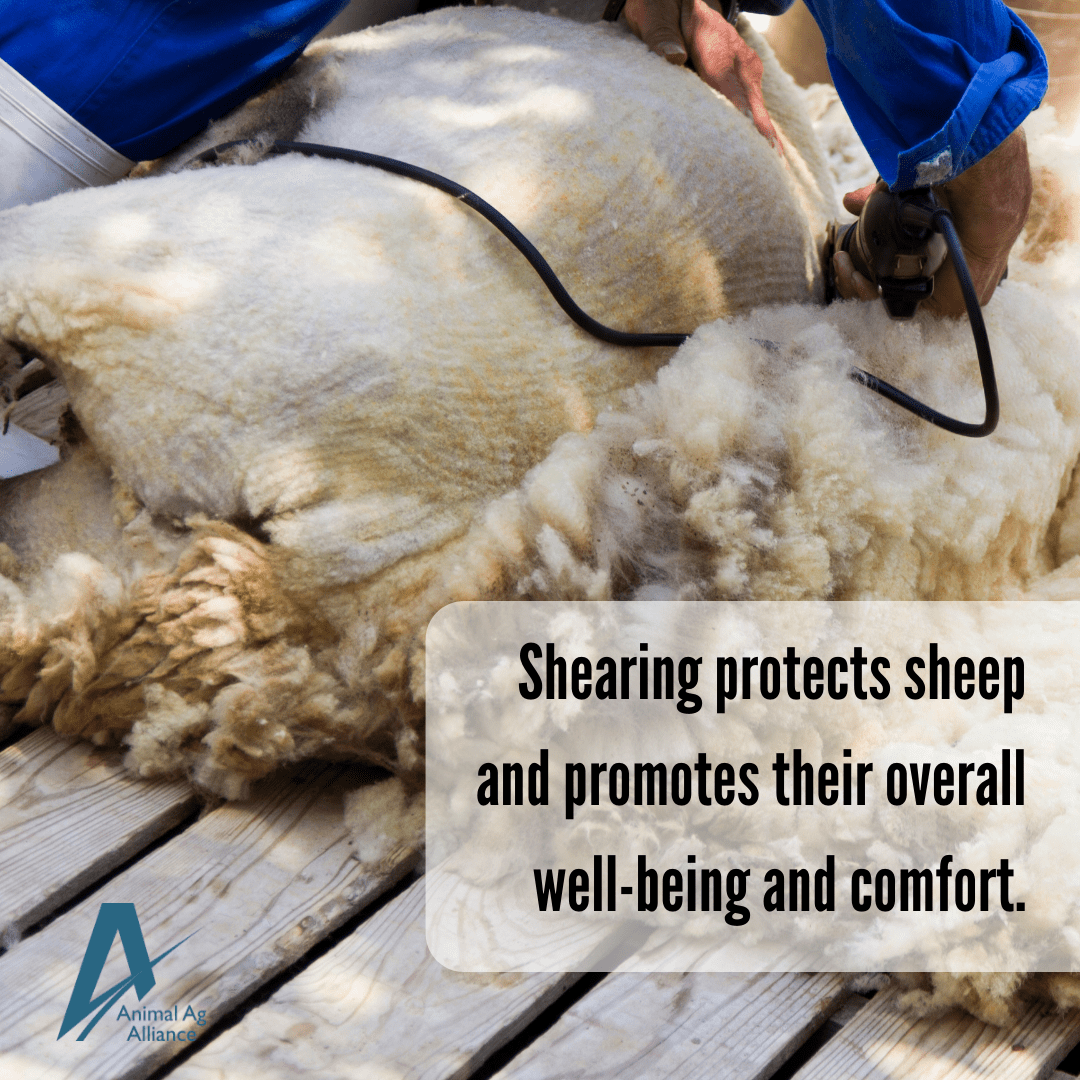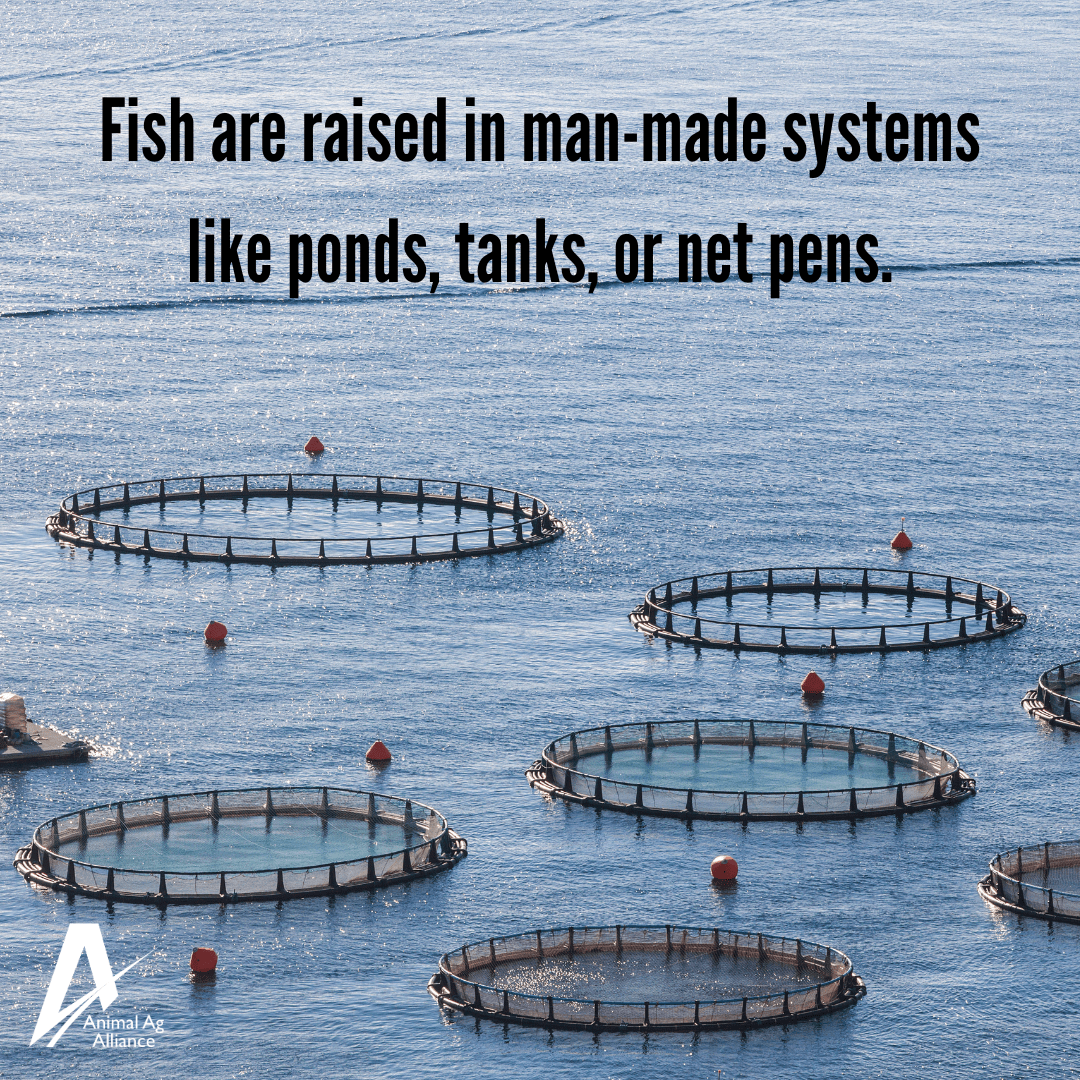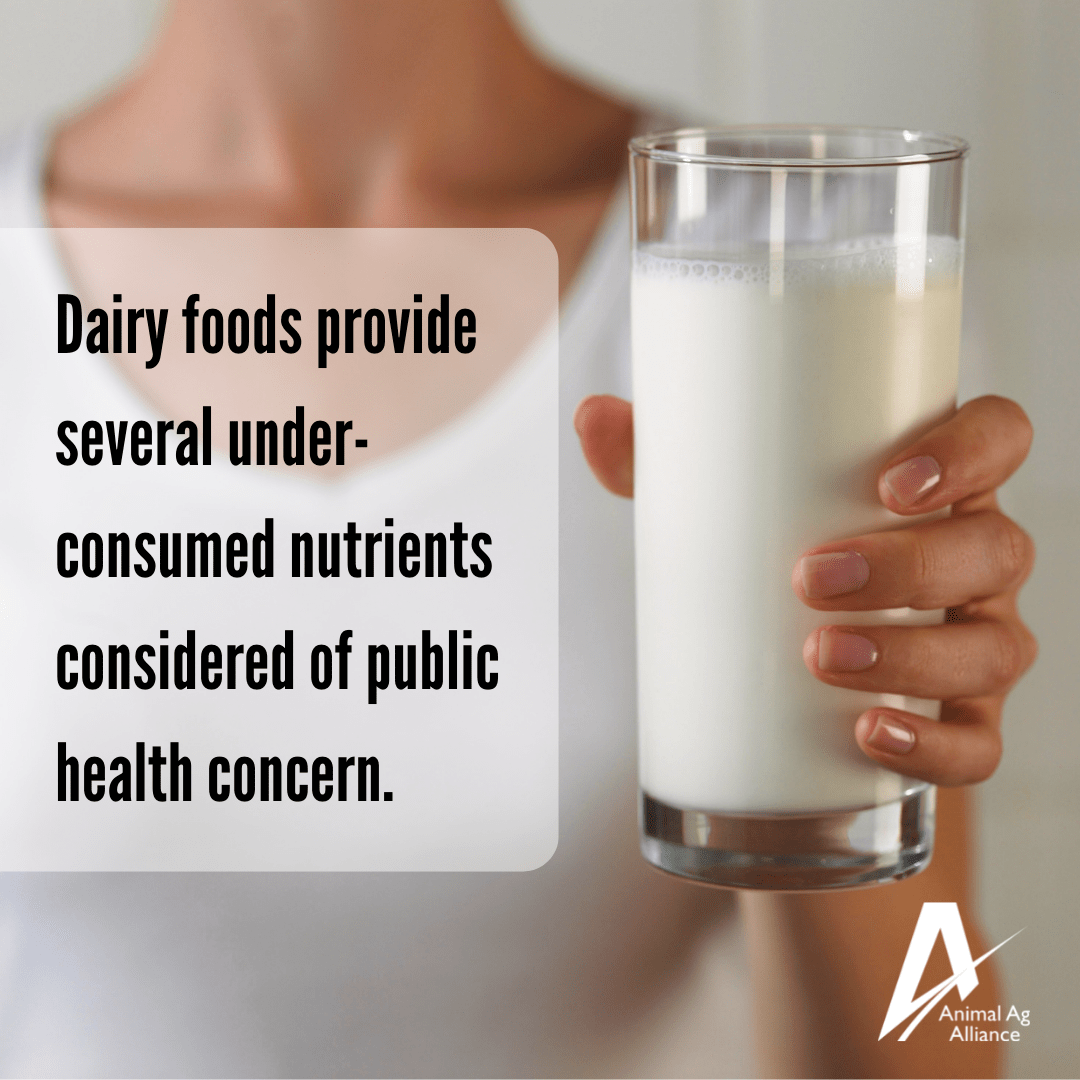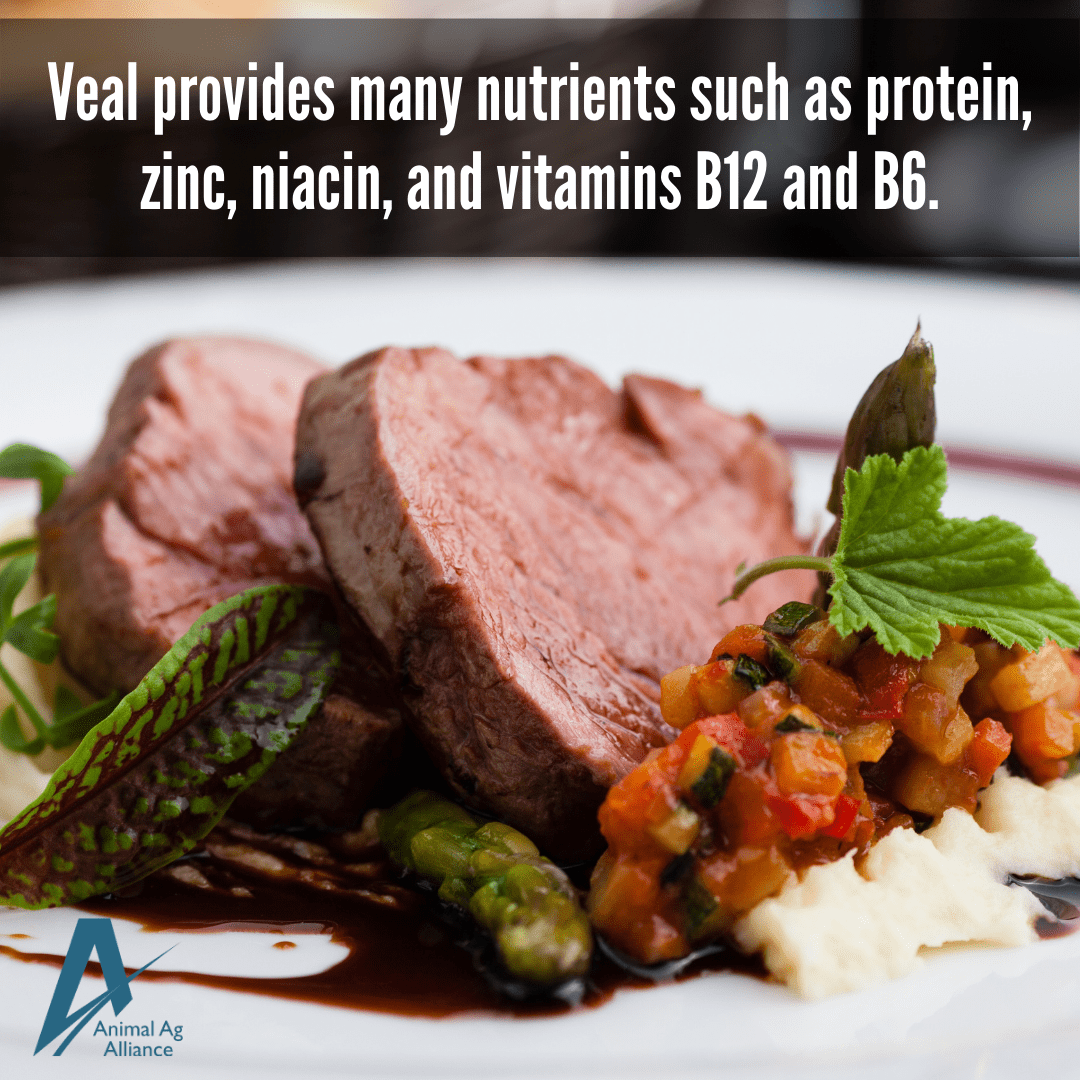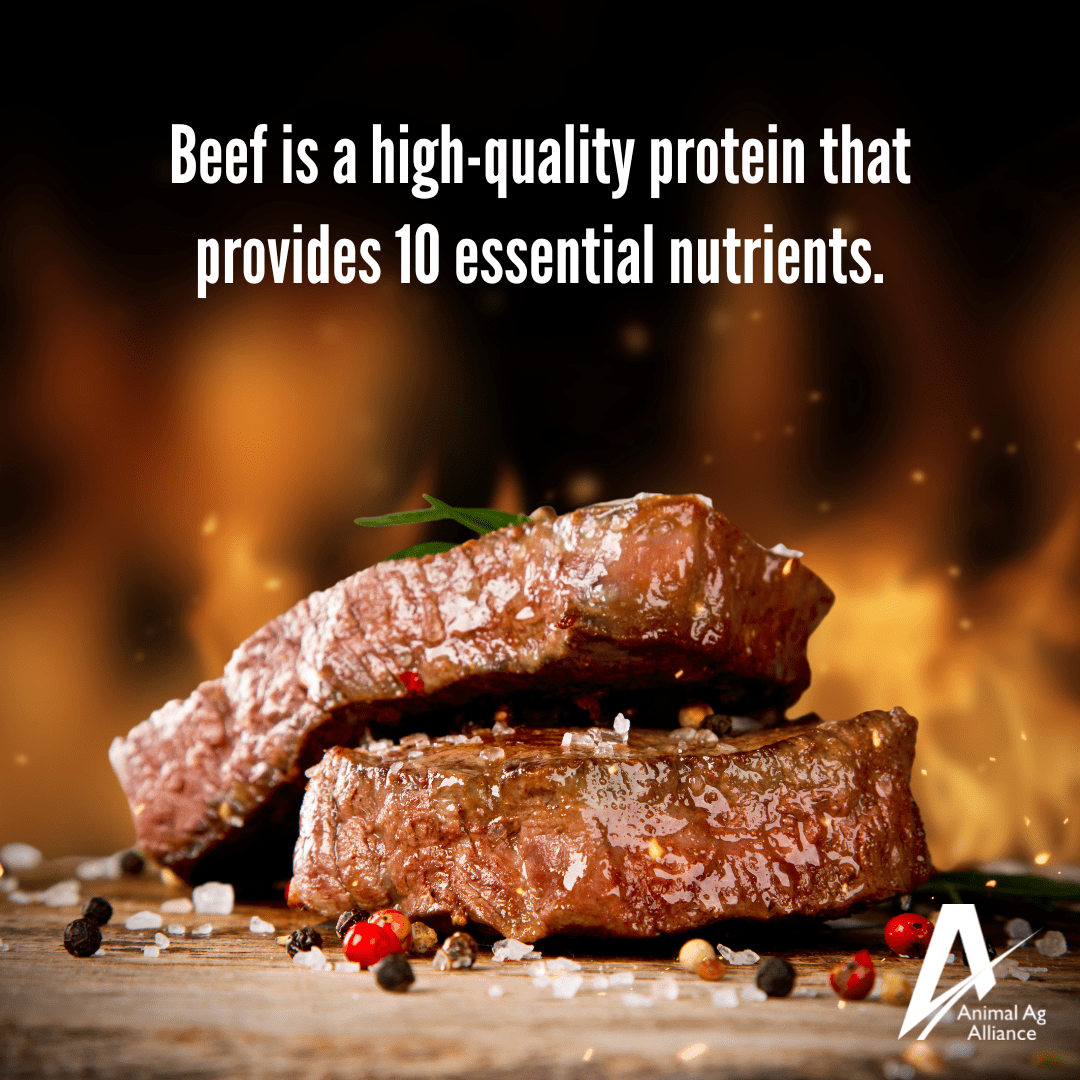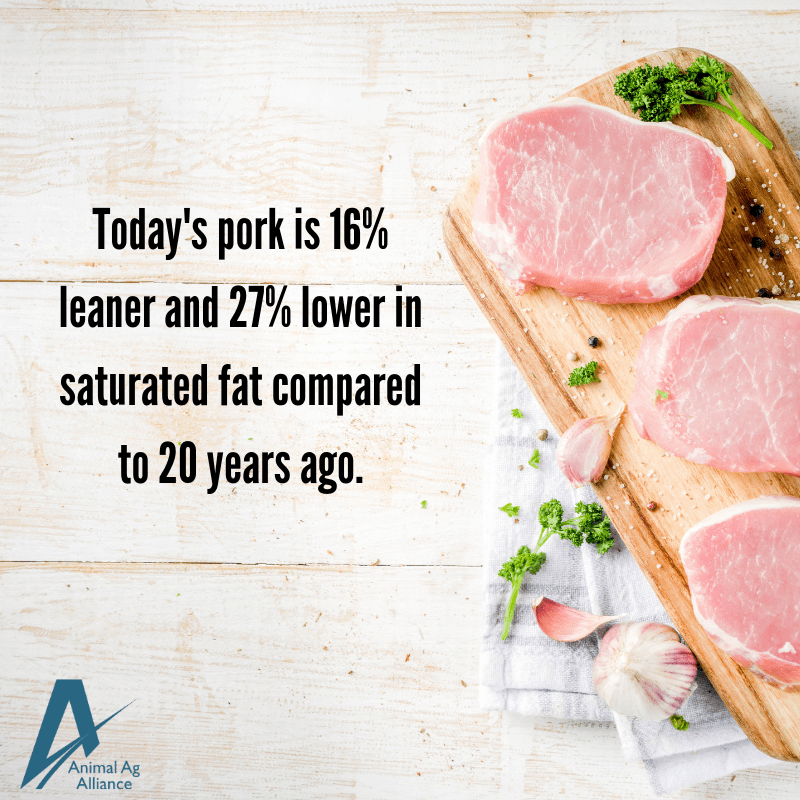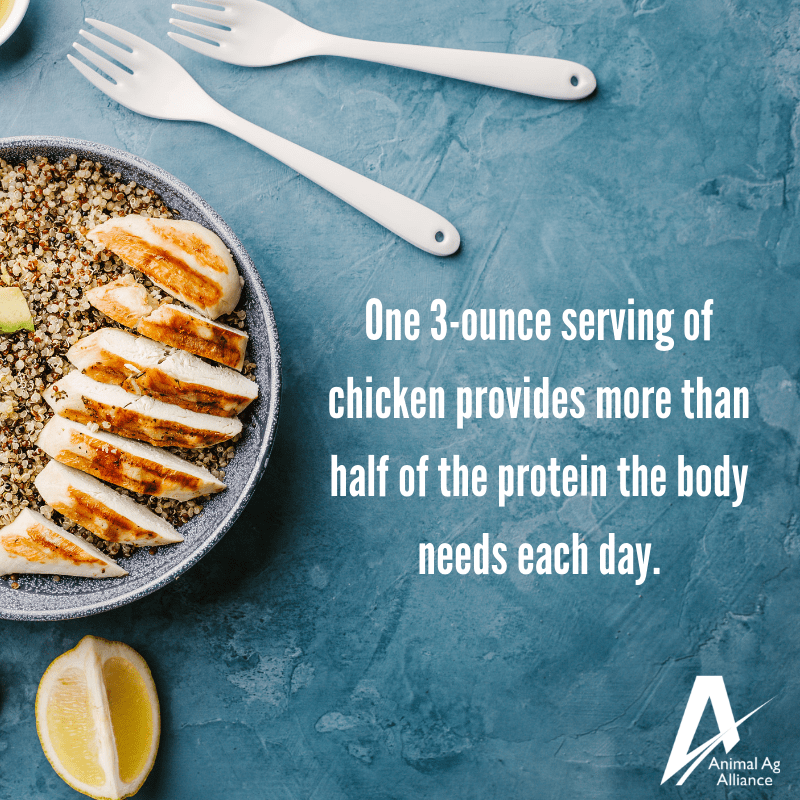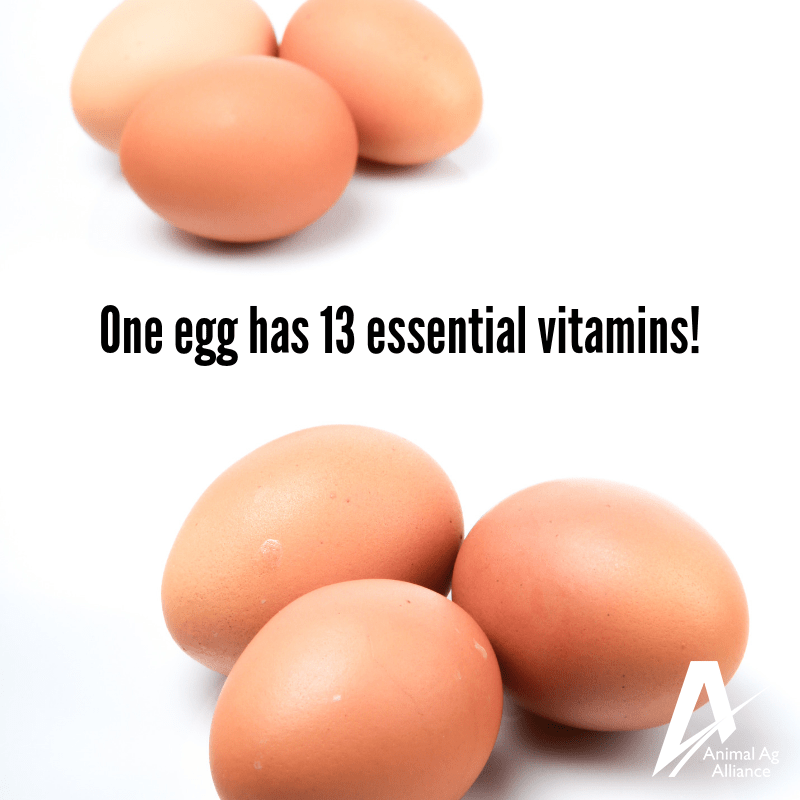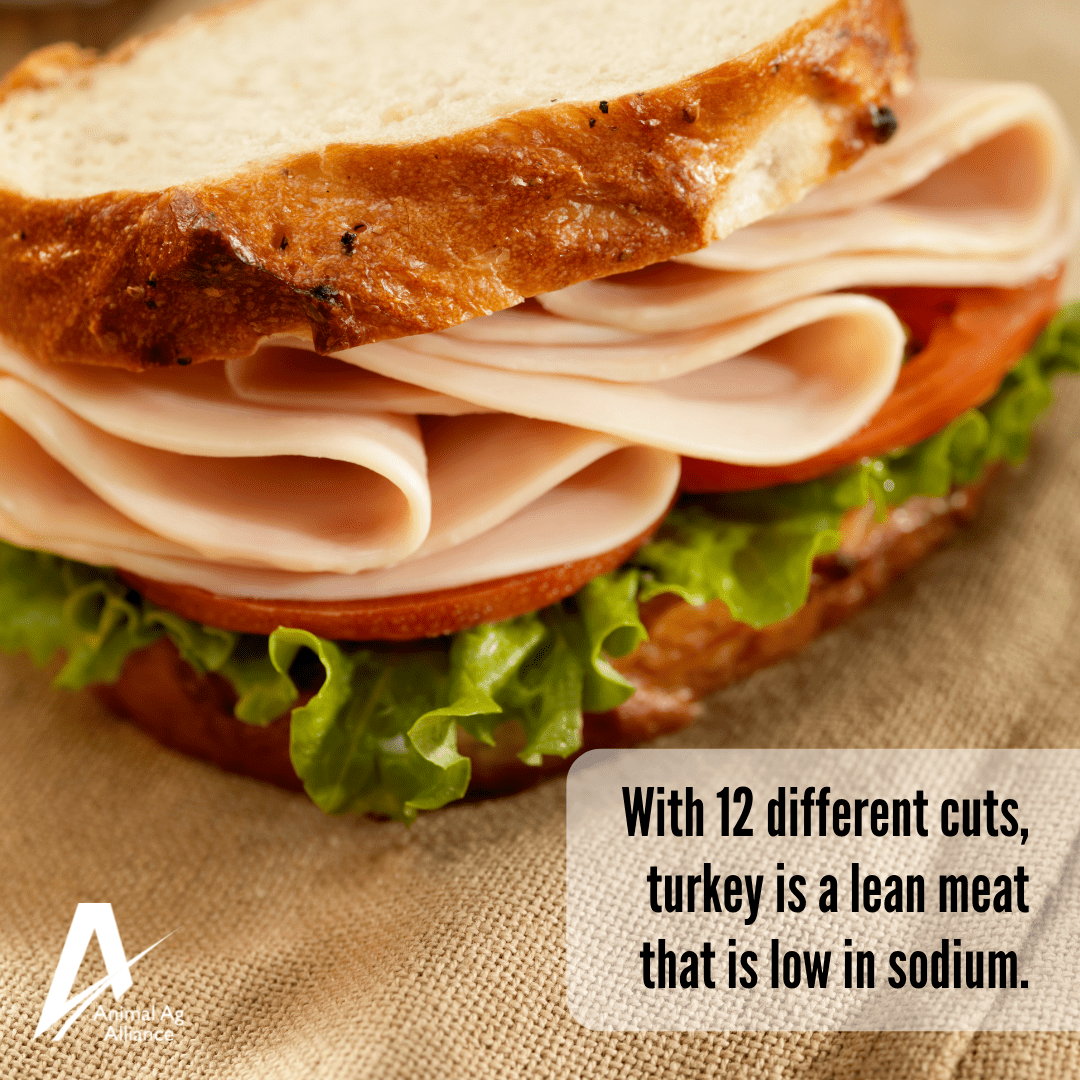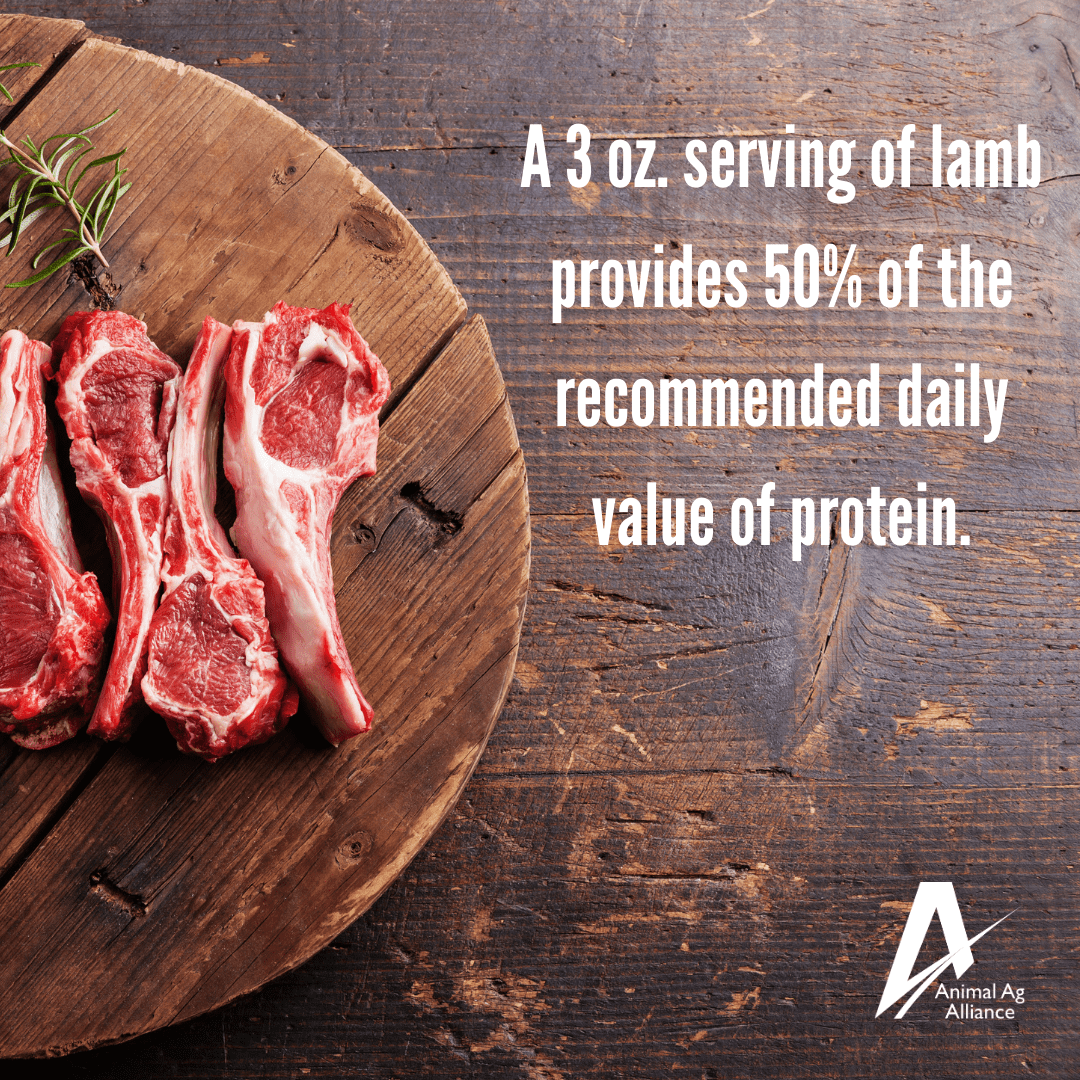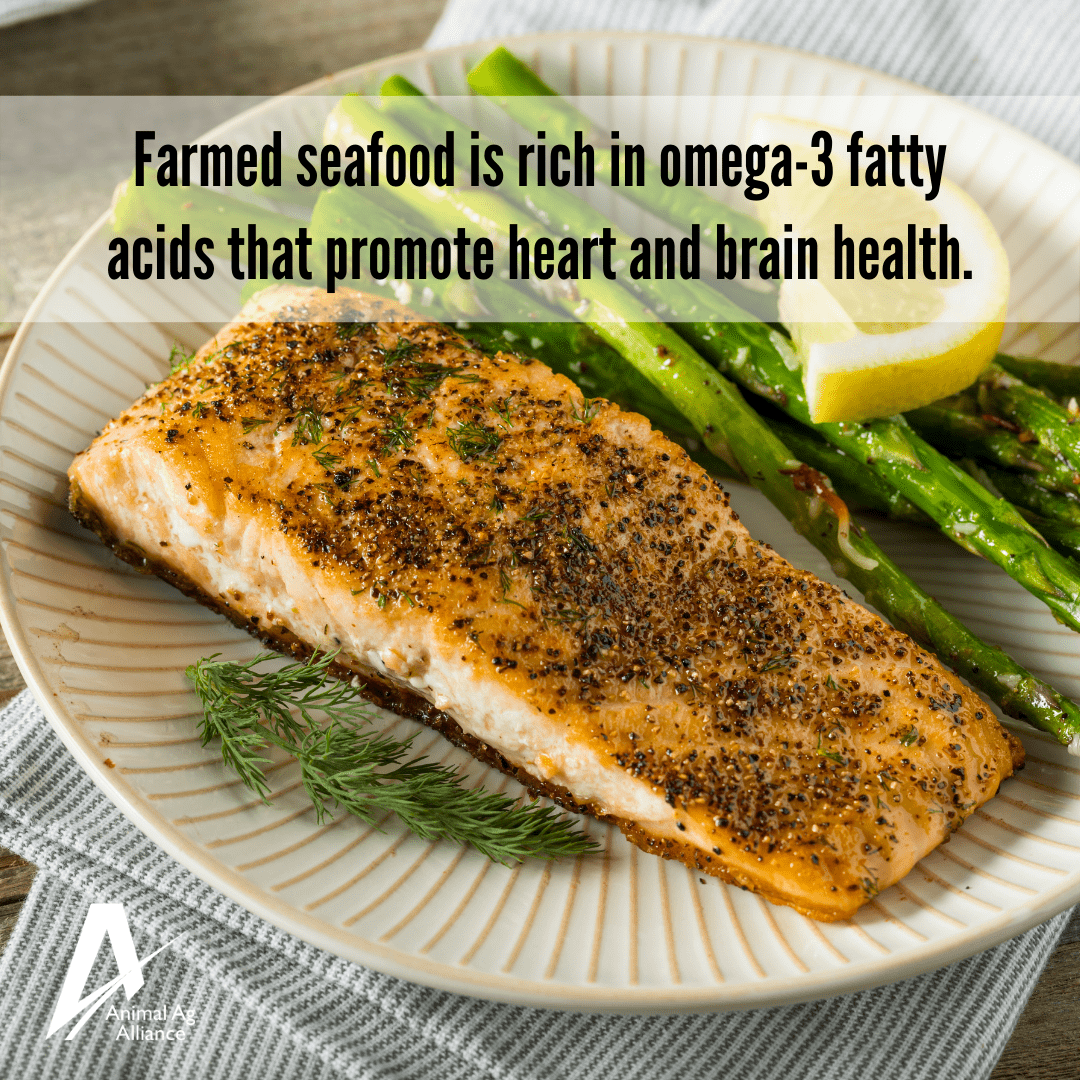Get social about animal agriculture by sharing these graphics to your social pages!
U.S. farmers and ranchers continue to make huge strides in conserving natural resources and protecting the environment, reducing the carbon footprint of animal agriculture
U.S. dairy farmers are working to increase their environmental sustainability. By 2050, they strive to: become carbon neutral or better, optimize water use while maximizing recycling, & improve water quality by optimizing manure and nutrient use. https://bit.ly/34wTBlx
On some dairy farms, cow manure gets flushed or trucked over to digesters, a processing tank equipped to capture biogas. Bacteria break down the manure into carbon dioxide and methane, which can then be sent to a generator to be used as clean, renewable energy! https://bit.ly/34wTBlx
In only a decade, dairy farmers have made huge strides in reducing water & land usage, leading to a 19% reduction in the overall carbon footprint to produce a gallon of milk! Improvements in animal welfare, nutrition, health, & breeding also contributed. https://bit.ly/34wTBlx
Beef farmers and ranchers in the U.S. are already global leaders in sustainable beef production. In 2021, several sustainability goals were released to further demonstrate the community’s dedication to continued improvement. https://bit.ly/34wTBlx
Did you know cattle provide important services to the environment? This includes ecosystem benefits like: mitigating the risk of wildfires, water regulation and purification on grazing lands, carbon sequestration, and providing wildlife habitat. https://bit.ly/34wTBlx
As a result of scientific advancements in beef cattle genetics, nutrition, production practices, and biotechnologies, the U.S. is a global leader in beef production efficiency. Talk about sustainability! https://bit.ly/34wTBlx
Pig farming is continuously advancing to reduce its environmental footprint. Some farms are already carbon neutral or negative! https://bit.ly/34wTBlx
The pork community is always working to reduce its environmental impact through conservation, recycling, land management, water quality, air quality and manure management! https://bit.ly/34wTBlx
Using renewable resources has been increasingly popular with pig farmers with some farms being even carbon neutral or negative. https://bit.ly/34wTBlx
The chicken community is on a continuous journey to reduce its environmental impact! https://bit.ly/34wTBlx
Modern chicken farmers follow practices that reduce the impact on the environment and natural resources. Compared to 25 years ago, today’s chickens now require 7% less feed per pound to grow! https://bit.ly/34wTBlx
Compared to 1960, egg farmers have made significant strides in minimizing their environmental impact with the help of technological advancements and improved animal husbandry practices. https://bit.ly/34wTBlx
Egg farmers work with scientists, researchers, engineers, & technical experts to further improve their sustainability practices. Manure from hens can be recycled into natural fertilizer to grow crops with little nutrient loss to waterways or the air. https://bit.ly/34wTBlx
Advancements in breeding and genetics have helped turkey farmers raise more birds with less feed! https://bit.ly/34wTBlx
Sheep convert nutrient-dense grasses, legumes, and forage into wool and a healthy protein source that humans can eat! https://bit.ly/34wTBlx
Marine aquaculture in the U.S. contributes to seafood supply, supports commercial fisheries, restores habitat and at-risk species, and maintains economic activity in coastal communities and at working waterfronts in every coastal state! https://bit.ly/34wTBlx
Livestock are able to eat byproducts not consumable by humans and upcycle them into a nutritious protein source. This helps to reduce waste from other industries and assists each of us in meeting our daily nutrition requirements. https://bit.ly/34wTBlx
Over 95% of poultry litter is recycled and reused to fertilize crops. https://bit.ly/34wTBlx
Animal care is a top-priority for farmers and ranchers, many of whom voluntarily participate in science-backed, research-tested animal welfare programs
Farmers and ranchers across all types of animal agriculture have resources to complete ongoing animal welfare training. This training keeps farmers up to date with new research and handling techniques and ensures that they are providing the best possible care for their animals. https://bit.ly/34wTBlx
Farmers and ranchers work hard every day to provide the best care possible to their animals, part of this is having a close relationship with a veterinarian to ensure each animal is healthy and receives proper treatment if needed. https://bit.ly/34wTBlx
Farm families take the ethical obligation of providing the best quality care to their animals very seriously. Although farm size and type of production practices may vary, one thing farmers and ranchers have in common is the commitment to caring for their animals. https://bit.ly/34wTBlx
The FARM program brings together experts and stakeholders to institute science-based standards and tools for the dairy community in animal care, antibiotic stewardship, sustainability, and workforce welfare. It assures your milk comes from a good place. https://bit.ly/34wTBlx
Veal farmers are committed to providing for the care and comfort of their calves. They are raised in group housing pens that are kept clean, dry and well-lit! https://bit.ly/34wTBlx
The Beef Quality Assurance (BQA) program trains farmers and ranchers in safe and effective animal husbandry techniques, including things like low-stress animal handling. https://bit.ly/34wTBlx
Farmers are dedicated to animal welfare each and every day. Everyone on the farm plays role – from farm owners and veterinarians to farmworkers and drivers, everyone has a major part to play in keeping their pigs happy and healthy! https://bit.ly/34wTBlx
Today’s chicken farmers receive yearly animal welfare training and follow current expert guidelines on best care practices. https://bit.ly/34wTBlx
Egg farmers are committed to providing the best care possible for their hens. UEP Certified provides guidelines for all types of hen housing that ensure farmers adhere to science-based welfare practices! https://bit.ly/34wTBlx
Barns provide a safe, comfortable home for turkeys and are specially designed to maximize the health and comfort of the birds. Barns keep predators away, help farmers control germs and diseases from getting to the birds, and allow maximum comfort – turkeys stay cool in the summer, warm in the winter, and dry during inclement weather. https://bit.ly/34wTBlx
Shearing protects sheep from predators and parasites, reduces them from getting caught in objects, and keeps them from overheating. https://bit.ly/34wTBlx
Farm-raised fish start in hatcheries and are then moved to ponds, raceways, tanks, or net pens, depending upon the species. A catfish pond is typically 10 acres or less with a depth of 5 to 10 feet. https://bit.ly/34wTBlx
Meat and dairy provide unmatched nutrition for healthy bodies, brains, and bones
Dairy foods contain high-quality protein and are often recommended as part of nutritional meal plans because they contribute essential nutrients AND great taste! Dairy also contains calcium, vitamin D and potassium, three of the four under-consumed nutrients that are considered to be a public health concern. https://bit.ly/34wTBlx
Veal can provide more than 10% of the daily values for multiple nutrients! https://bit.ly/34wTBlx
Beef is a high-quality protein that provides 10 essential nutrients! Because of this, beef has been proven to support muscle maintenance, weight management, and even the prevention of chronic diseases. https://bit.ly/34wTBlx
Several cuts of pork meet the USDA guidelines for “lean” by containing less than 10 grams of fat, 4.5 grams of saturated fat, and 95 milligrams of cholesterol per 100 grams of meat! https://bit.ly/34wTBlx
Chicken is lower in fat and calories than some other meats and provides important nutrients, including generous amounts of high-quality protein. https://bit.ly/34wTBlx
An egg is nature’s multivitamin! https://bit.ly/34wTBlx
Turkey isn’t just for Thanksgiving dinner. With 12 different cuts available, the possibilities are endless! https://bit.ly/34wTBlx
Lamb is a great source of protein, which is essential for bone and muscle development in the body! https://bit.ly/34wTBlx
Omega-3 levels in fish are highly dependent on what the fish ate, which can vary based on where the fish lived and when it was caught. Farm-raised fish typically meet or exceed omega-3 levels compared to wild-caught! https://bit.ly/34wTBlx
